Although we had originally planned to turn south back in to Thailand and head to Chiang Mai for a while, we had enjoyed Laos more and more the further north we went, and we still had the most famous and popular parts unvisited – so we rearranged our plans and set off north, first stop the small town of Vang Vieng. Notorious for many years as a haven of drugged out drunken backpackers, it cleaned up its act a few years ago, and while still very touristy, is a much nicer place to visit now. Since it was also the day of my 30th birthday, we decided to pay homage to the backpacker tradition and go tubing – floating down the river on an inflated truck inner tube, stopped every few hundred metres at the bars that line the river for drinks, dancing, soccer and volleyball and general fun times. Sadly, I have no photos from this as at one point I dropped the Gopro into the muddy river and couldn’t find it again. Still, it was a beautiful spot and interesting accommodation, it was a pity to leave having only spent an afternoon – but that’s the way the schedule works.
Fairly hungover the next morning, we headed further north, aiming for Luang Prabang. The ride was gorgeous, starting off with the sheer Karst cliffs looming over tiny villages and rice paddies.
The road snakes its way precariously along the hillside, giving you beautiful and distracting view after view into the valleys below, forcing you to concentrate on riding.
Often you’d round a ridgeline into a new valley, and have a view to the road running all the way back along the next ridgeline, only a few hundred metres away – but because the road follows the contours all the way around the valley, it takes several kilometres to reach that point.
It was spectacular riding, and great fun, but with the heat and a hangover coming in to play, we were pleased to finally pull in to Luang Prabang.
Once the royal capital and now a World Heritage listed town, Luang Prabang is probably the single biggest tourist attraction in Laos. We had a full day of exploring the town, starting with the royal palace museum and Wat Phra Bang, home to the ancient Buddha statue that the town is named after.
No photos were allowed inside either of them unfortunately, but the temple was as spectacular as the biggest temples in Thailand, even though the statue itself was a little underwhelming. The palace was very interesting, allowing you to see the rather gaudy reception and throne rooms, then the fairly austere and plain living quarters and bedrooms of the King and Queen – an interesting contrast.
Our next stop on our impromptu walking tour was the hill in the centre of the old town, right next door to the royal palace. It’s three hundred and something stairs to the top, but fortunately there were things to stop and look at to take a break in the midday heat.
Once at the top there was a small shrine, a large stupa, and 360 degree views over the town.
Coming back down the other side, the way was lined with different Buddha statues in different manifestations and poses, leading to a small temple.
The flowerpots were an interesting touch.
Back down in the streets below, the French colonial architecture was everywhere. Luckily the French influence included the cuisine, and we enjoyed good croissants and good wine, both of which are difficult to find in Asia!
The city sits at the confluence of the Mekong and Khan rivers, with the division immediately apparent by the difference of colour – the Mekong in brown and the Khan in green.
The locals had interesting ways to beat to heat.
At dusk, the street in front of the palace shuts down to traffic and turns into a night market – quite possibly the least pushy market in Asia. Vendors are happy to show off their wares and chat without any pressure to buy, which is a nice change – normally you’re harangued just because you’re walking past.
Leaving Luang Prabang, we headed north again, following the Ou river for a while to the town of Pakmong. Up until here, the road was great and we were making good time.
At this point, though, the road turns into a nightmare. Endless roadworks, choking dust, homicidal trucks and the roughest road we’ve seen in a long time.
Finally though, we hit the regional centre of Oudomxay, and mercifully the road turned back into the amazing riding roads we’ve had through Northern Laos.
At one point we passed within 16 kilometres of the border with China, but this wasn’t our goal (yet). Finally, as dusk was setting over the rice paddies we pulled in to our last stop in Laos – Luang Namtha.
With again just a single day in town, we hired a local guide to take us through the nearby National Park and to some of the hill tribe towns. Our first stop was the local market to stock up on supplies for lunch. Pong, our guide, joked that Laotians eat literally everything that moves.
We were then dropped off at the edge of the Nam Ha national park, to trek in to one of the villages. Our guide showed us the jungle food the locals gathered, and picked up plenty along the way.
Just before the village we stopped for lunch – fish bought from the market, with vegetables and sauces made from the jungle ingredients we had gathered.
Appetites satiated, we moved into the village of the Akha tribe.
They are animists, meaning they believe in local spirits. Our guide explained that there are gates at each end of the village decorated with scary totems, to drive off bad outside spirits, while the large swing is used for offerings to the ancestor spirits.
Moving between villages, we dropped by the home of the Blaik Tai that had been our second (non-English speaking) guide for the trek. He was a generous host, offering far too much of his ‘special’ herb-blended Laotian whiskey. The first shot was fine, but the subsequent ones were painful!
The last village we stopped at was the Lantan people, where we witnessed a ceremony of two brothers making offerings to their ancestors. The Lantans are the only hill tribe left to still wear the traditional clothes, as they believe if they die and they’re not wearing them, their ancestor’s spirits won’t be able to find them.
Their traditional houses also have three doors: the front door is for men and guests, the back door is for women, and there is another door in the centre for the spirits.
The next day it was finally time to leave Laos and head back to Thailand. The road from Luang Namtha to the border was another amazing Laotian road – built with Chinese money so in great condition, and consisting of endless sweeping curves looking over rice paddies or tree-filled valleys.
Some of the local drivers weren’t careful on the corners though – we saw two overturned trucks like this.
Finally we arrived at Friendship Bridge No. 4, the northernmost border between Laos and Thailand. Border formalities on both sides were surprisingly straightforward and fast – we got through the whole process in just over an hour. Of course there’s always a fee: apparently motorbikes aren’t allowed on the bridge, so we had to be ‘escorted’ across by the Laotian immigration police – for 500 baht (around $15USD); and again on the Thai side we faced a “processing fee” of 200 baht each. Not huge amounts, and it’s not worth risking not being let in to the country for a small amount of cash.
Tonight we’re sleeping in Chiang Rai, before heading to Chiang Mai tomorrow morning. The bikes need a full service and we need to buy a few things (such as a new Gopro) before heading south to the border crossing with Myanmar.

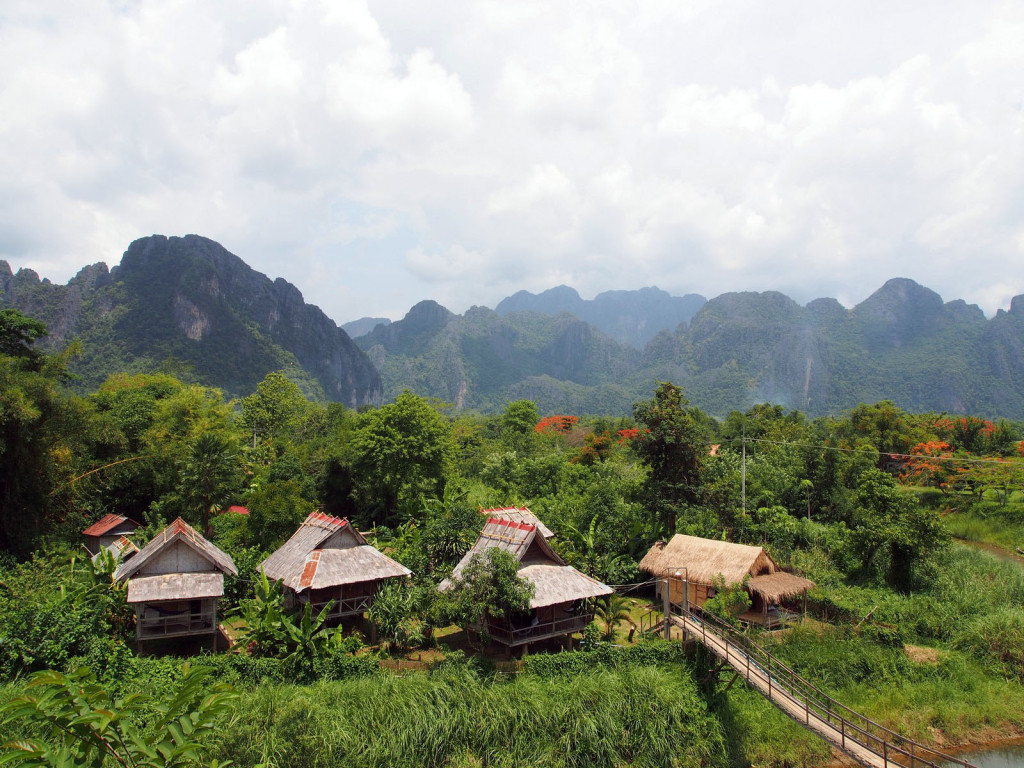
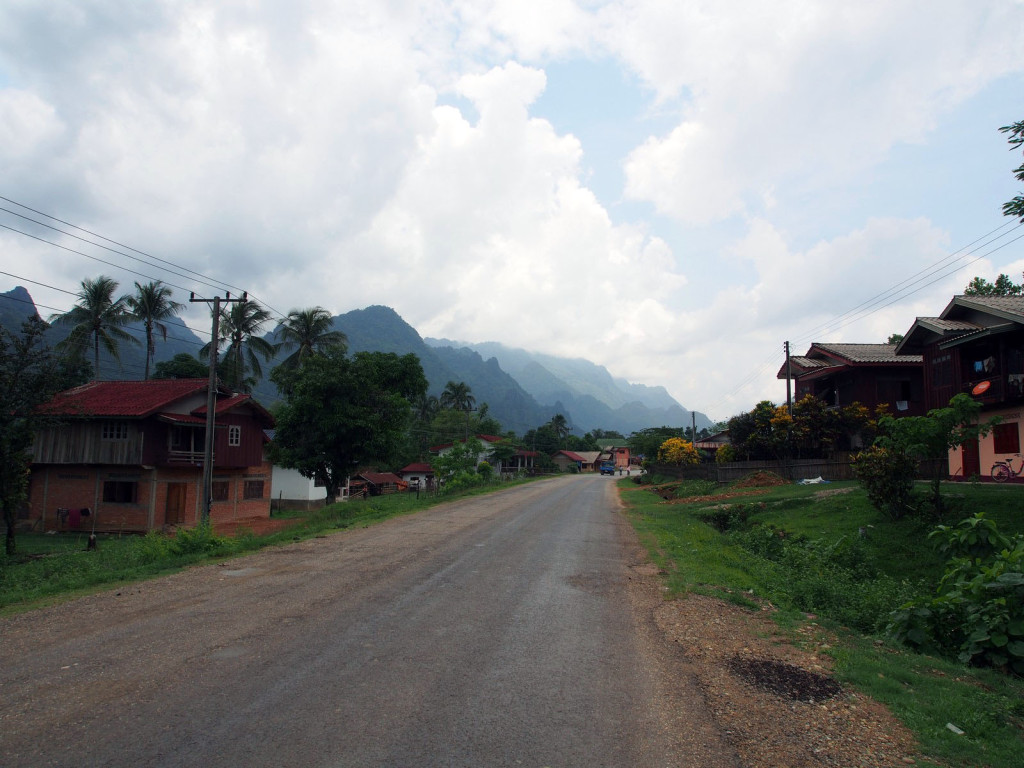
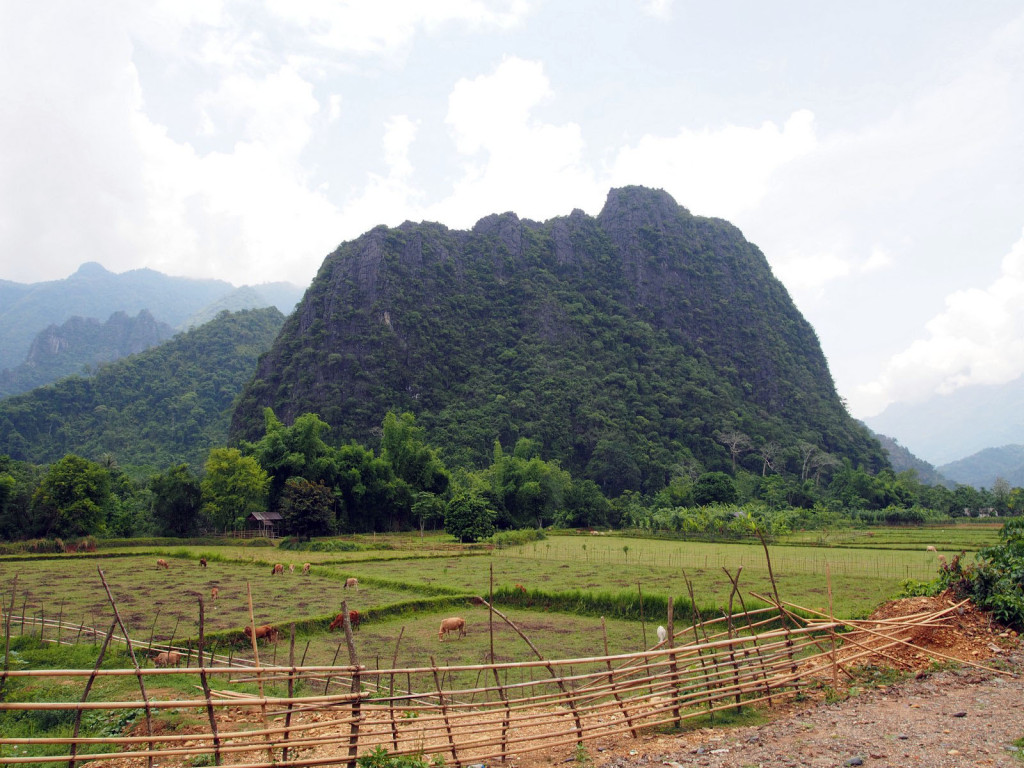


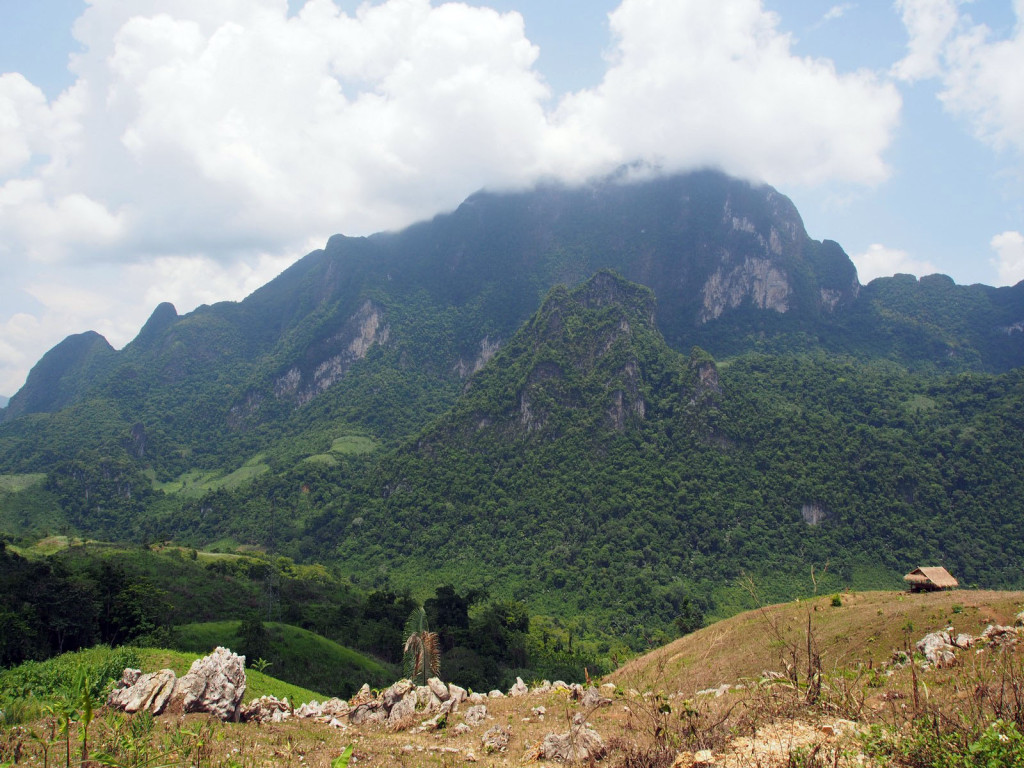

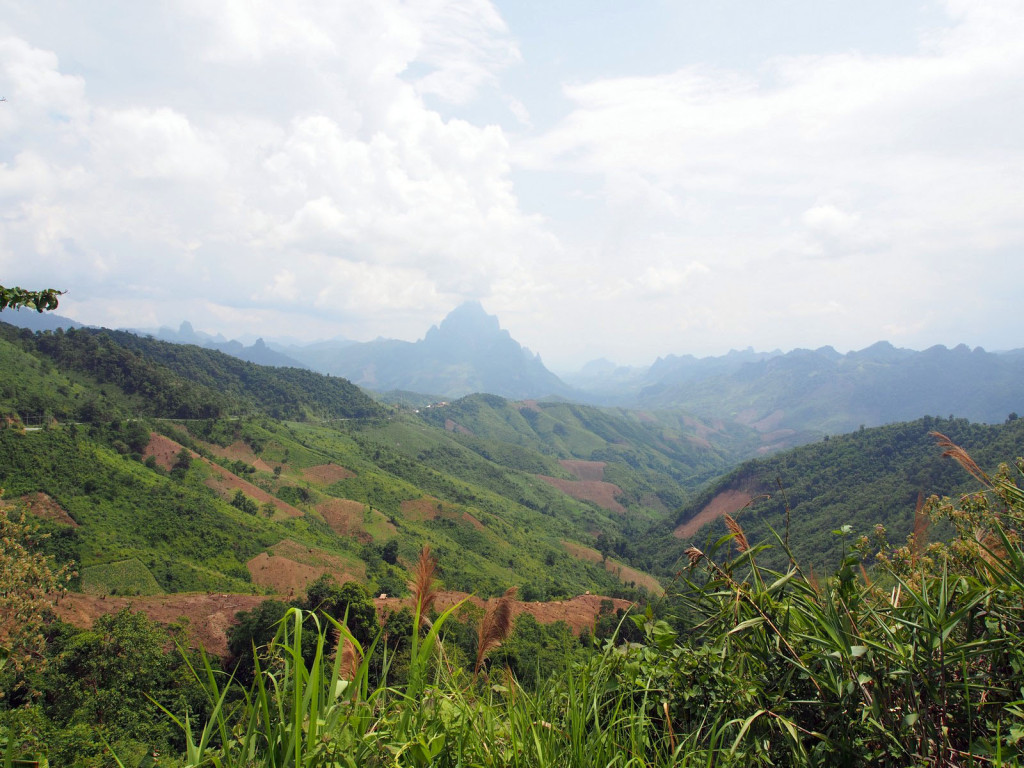
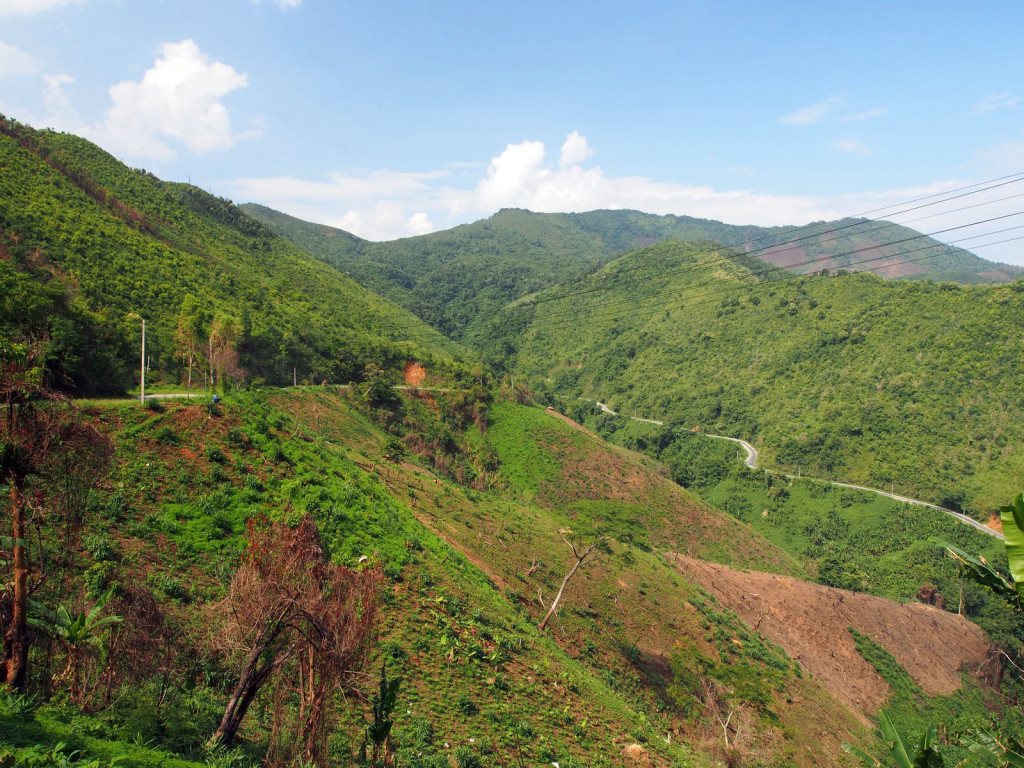
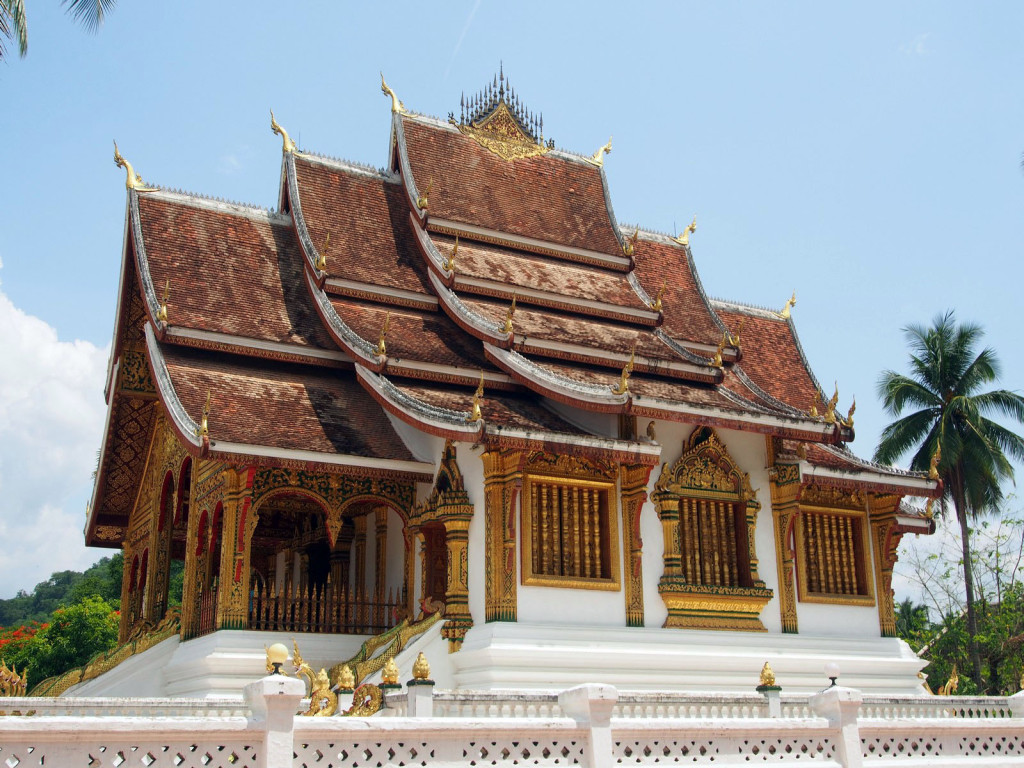
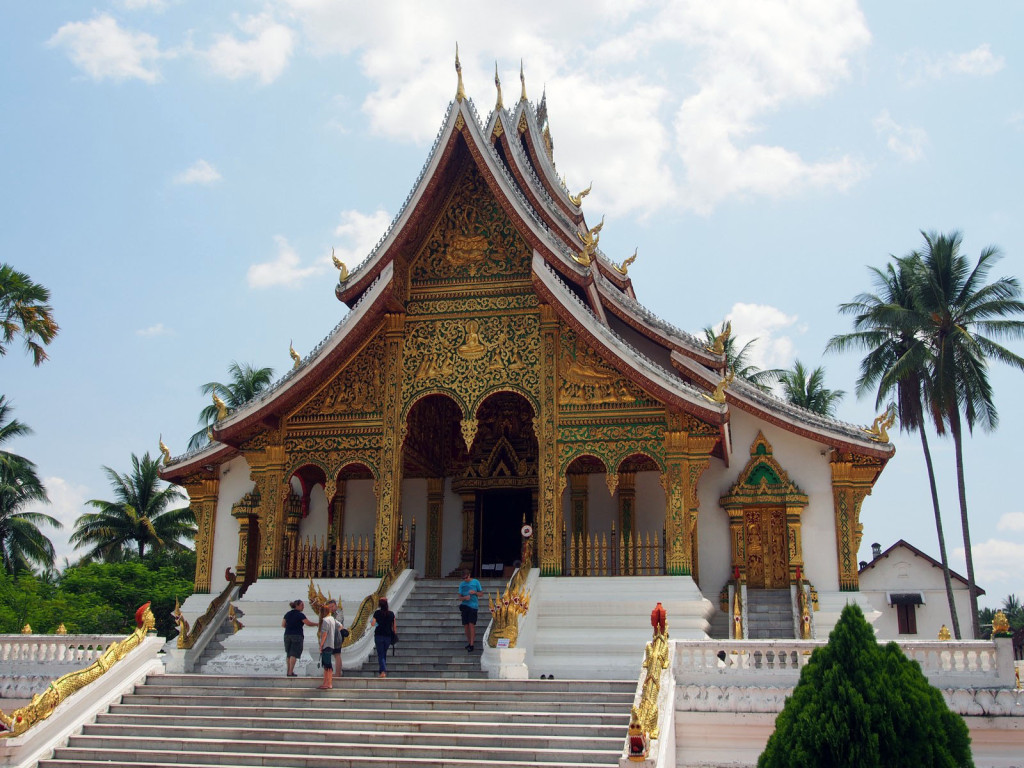
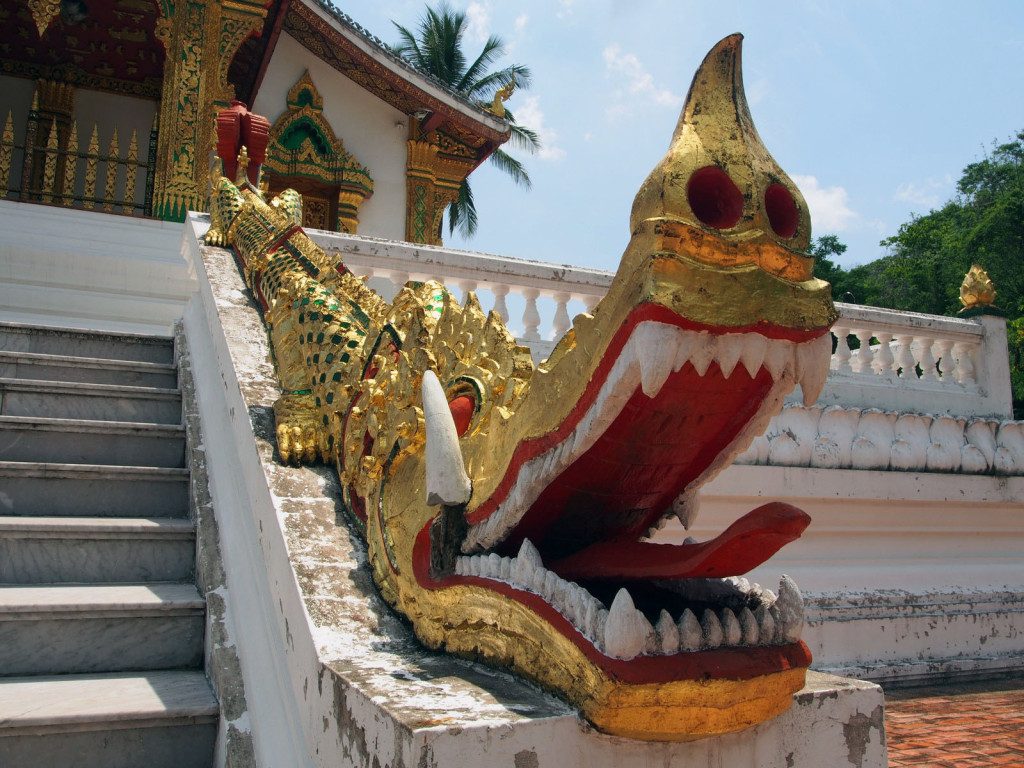
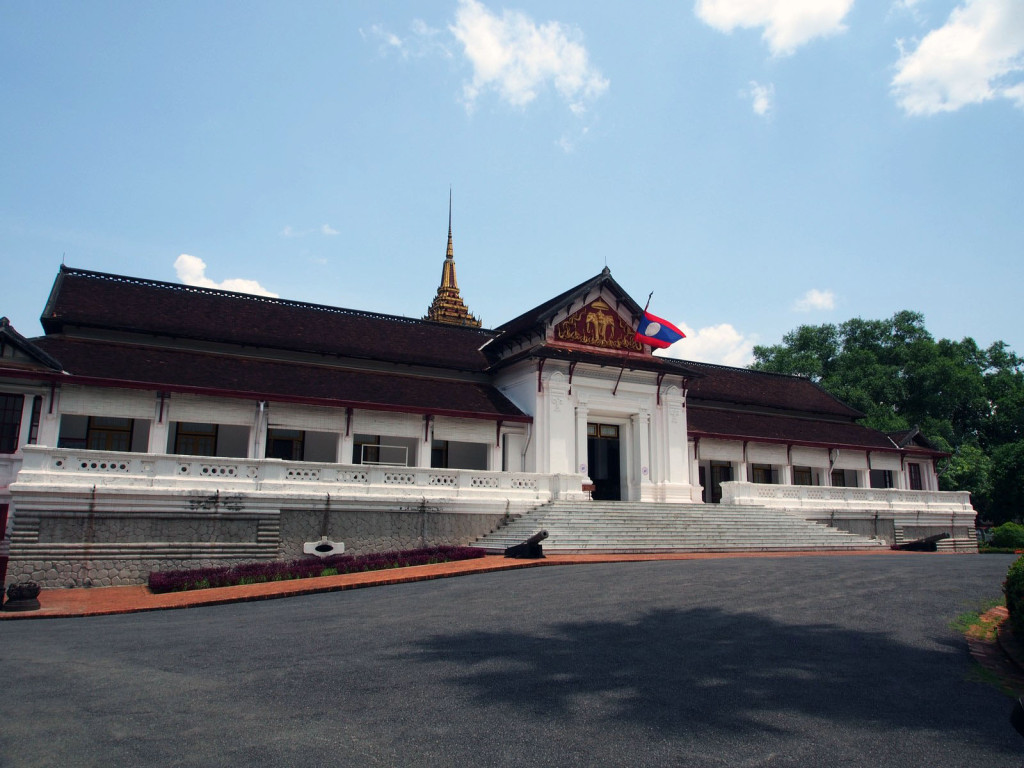
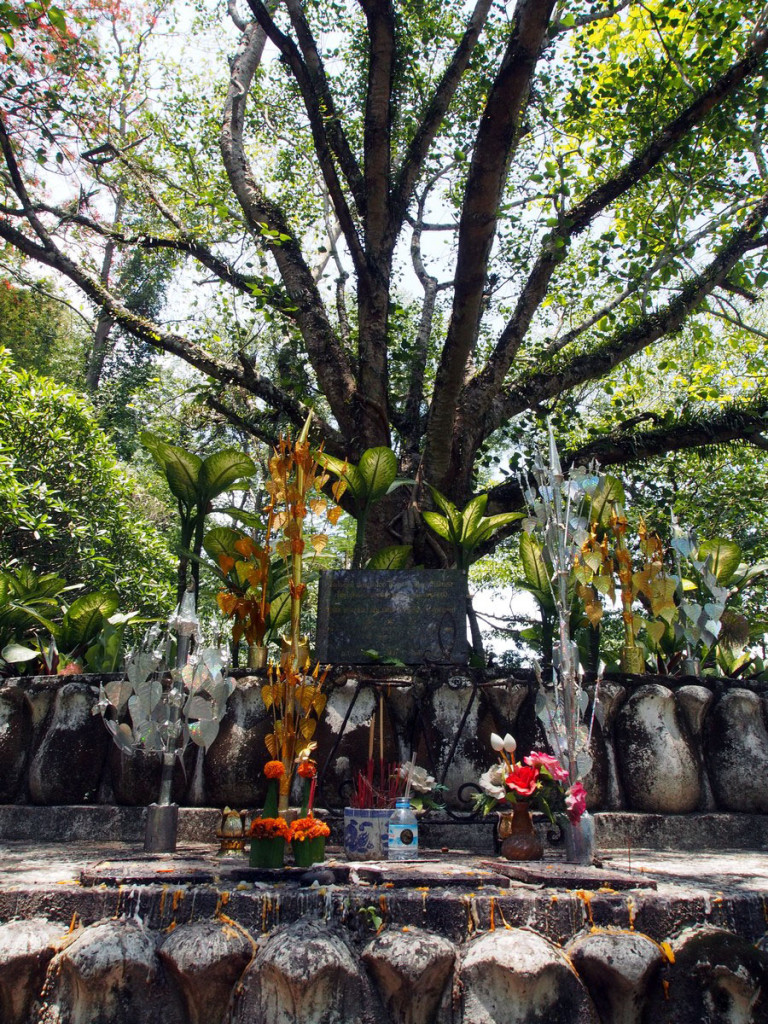
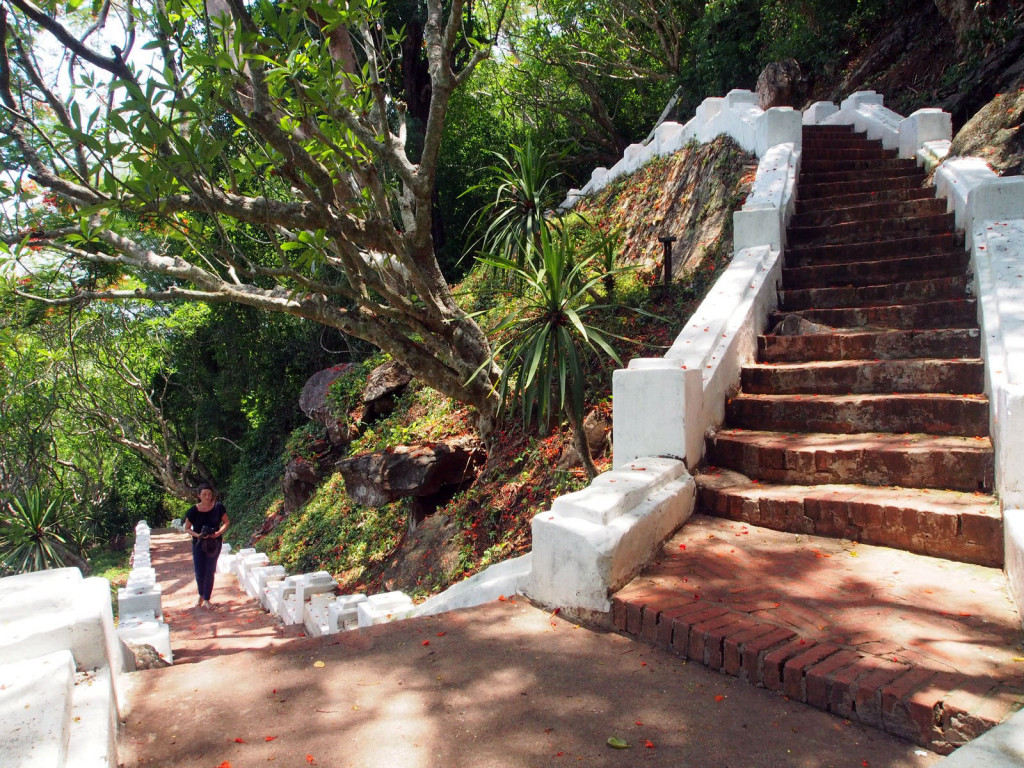
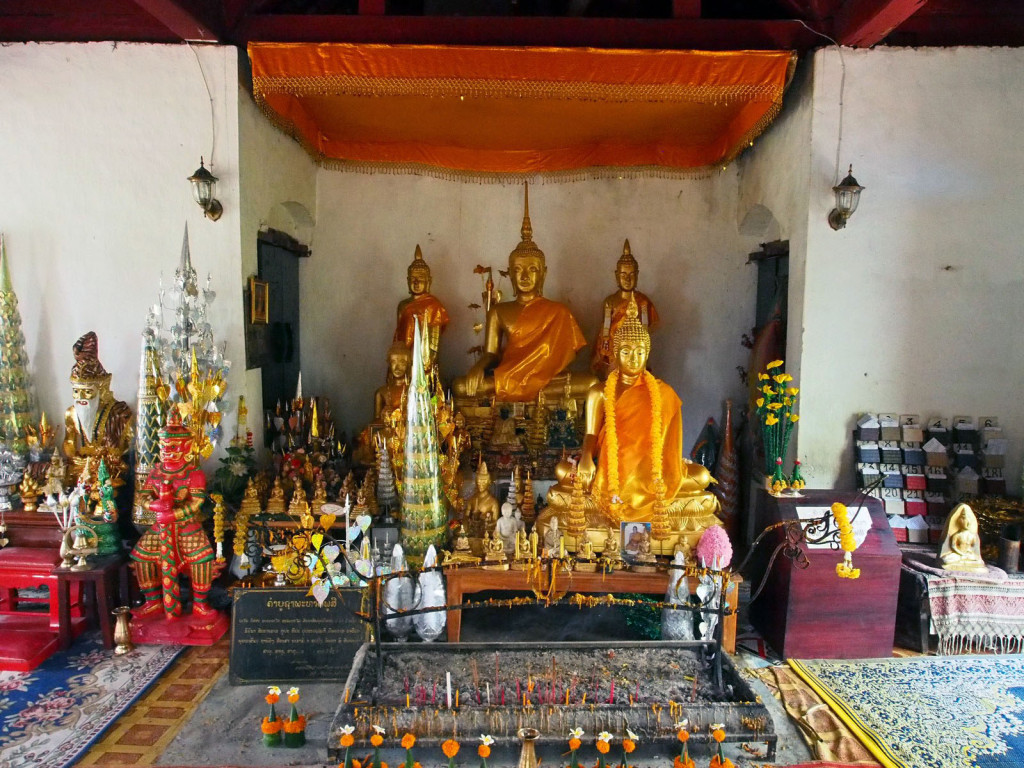
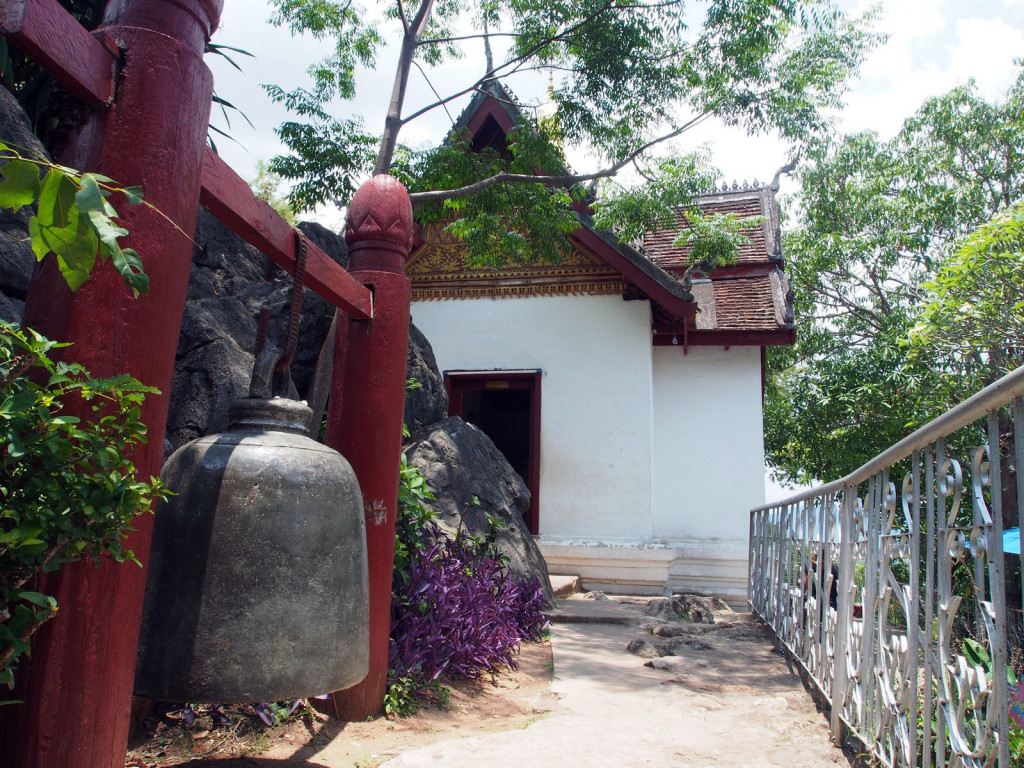


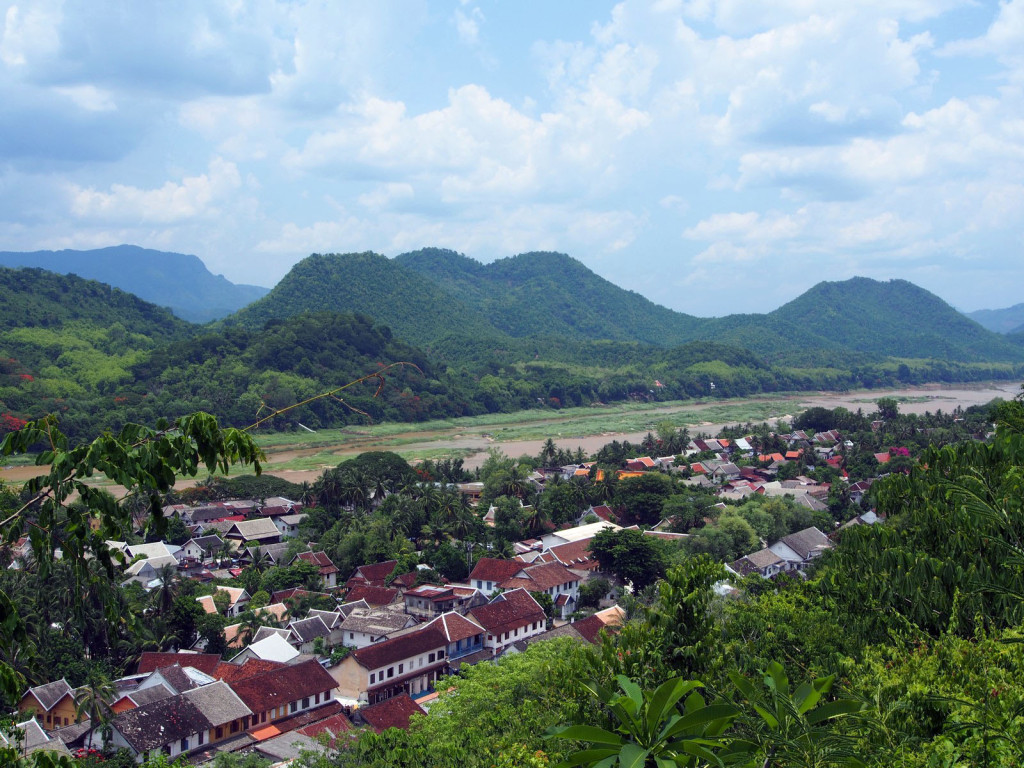
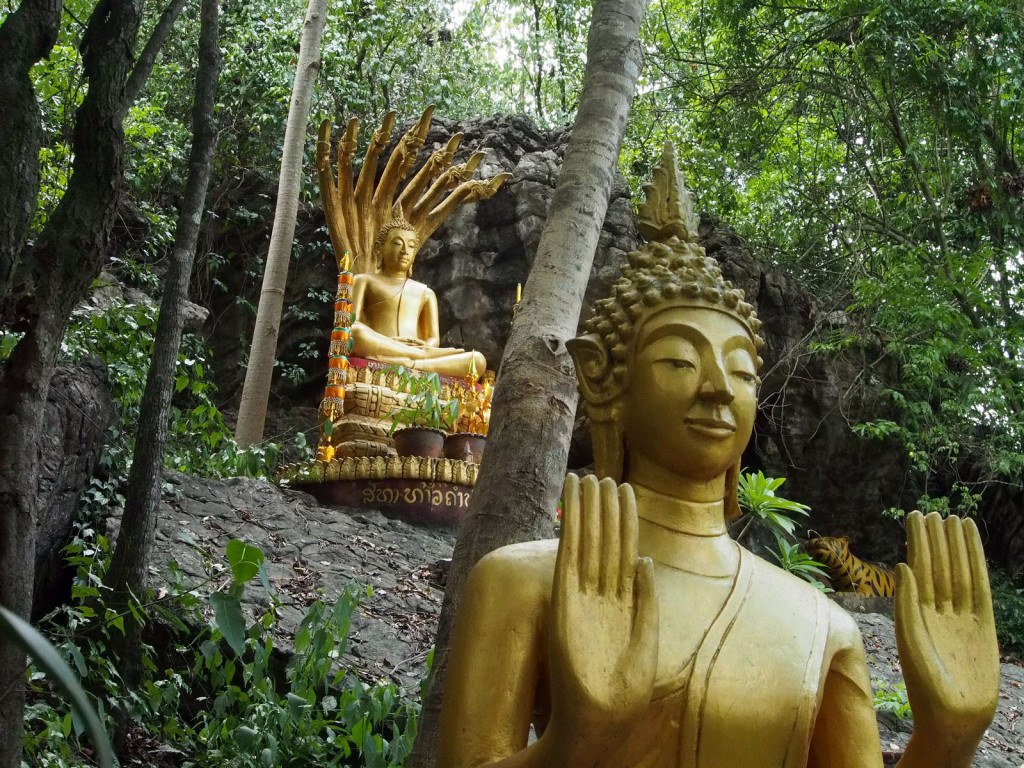
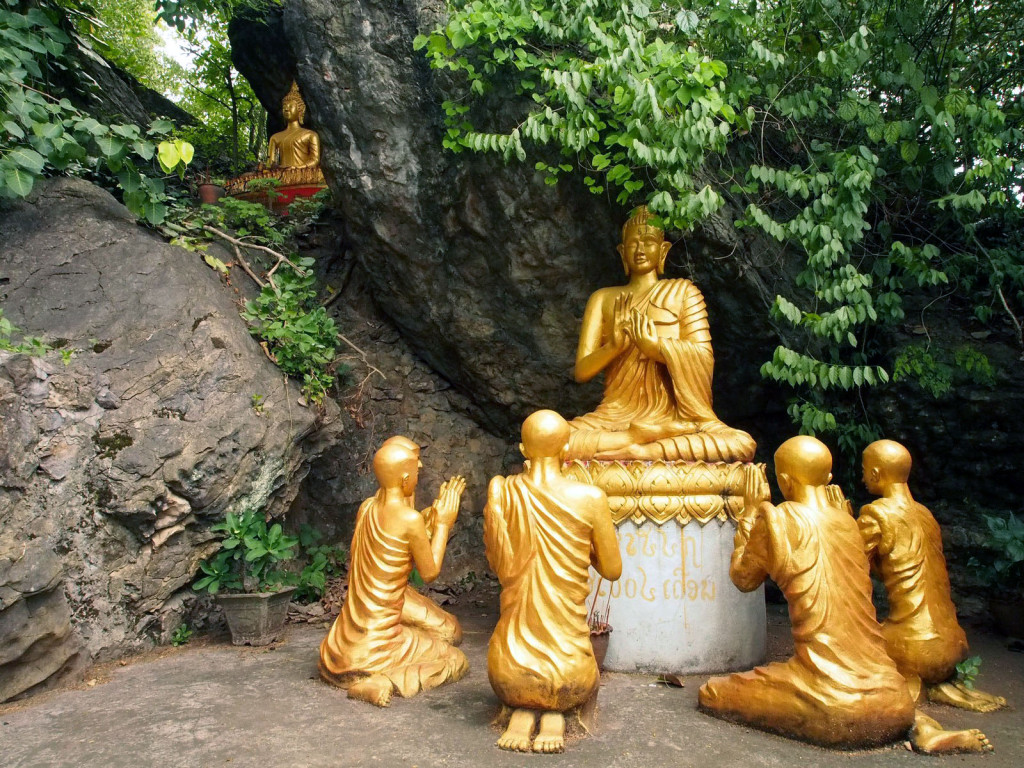
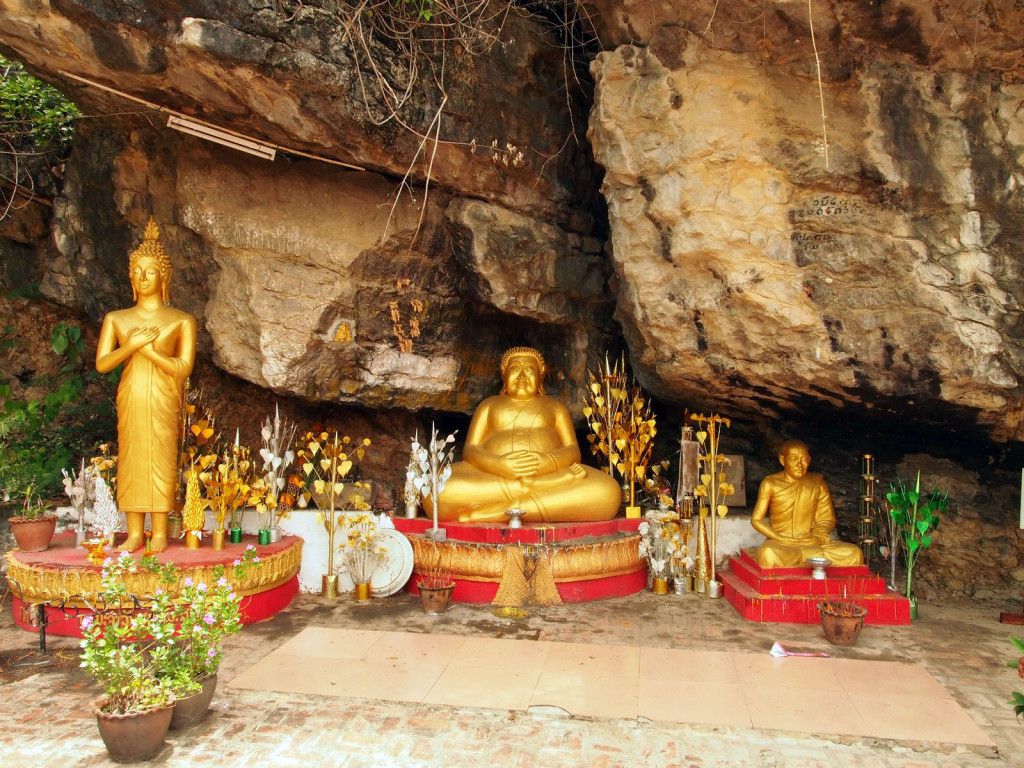
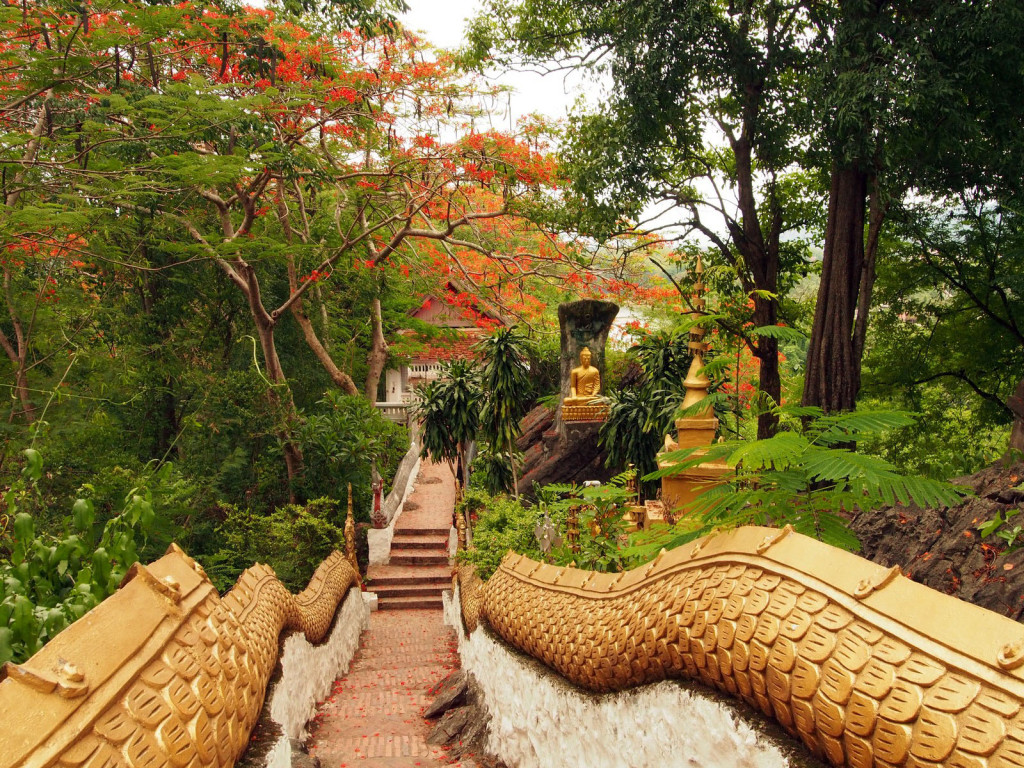

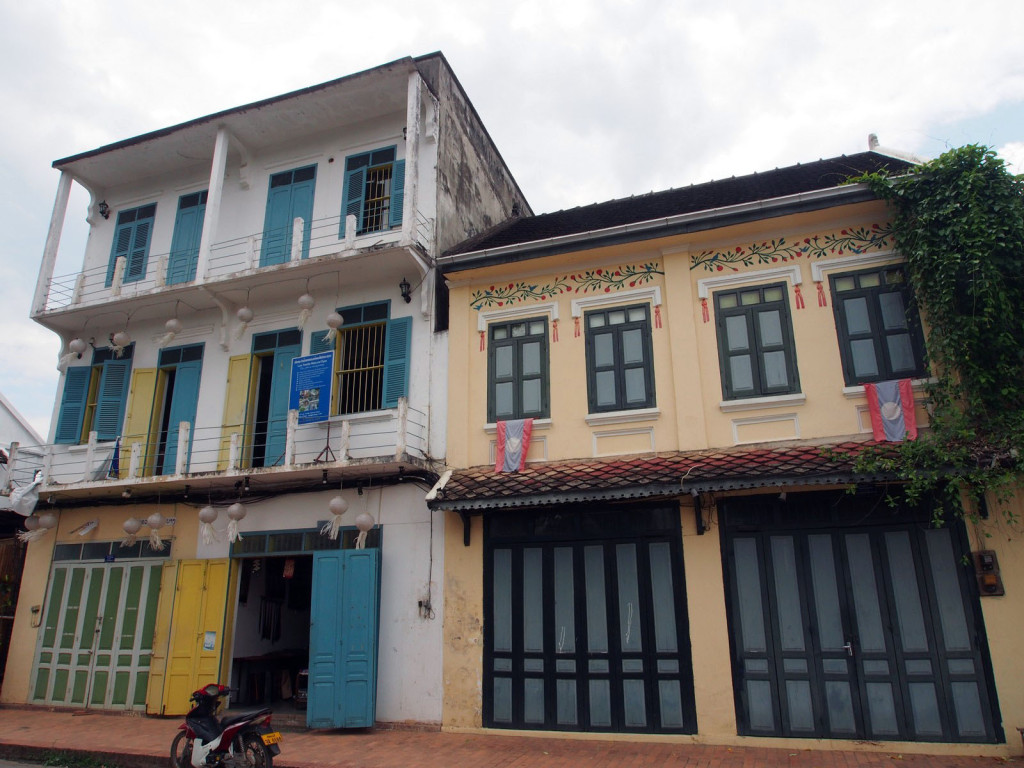
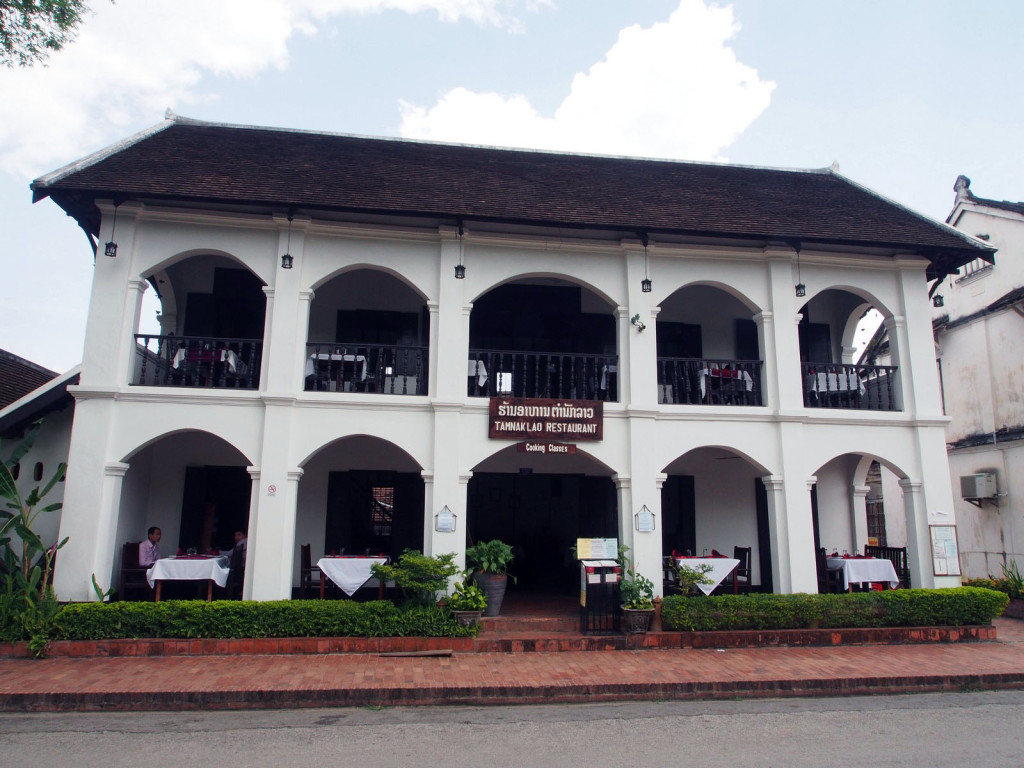
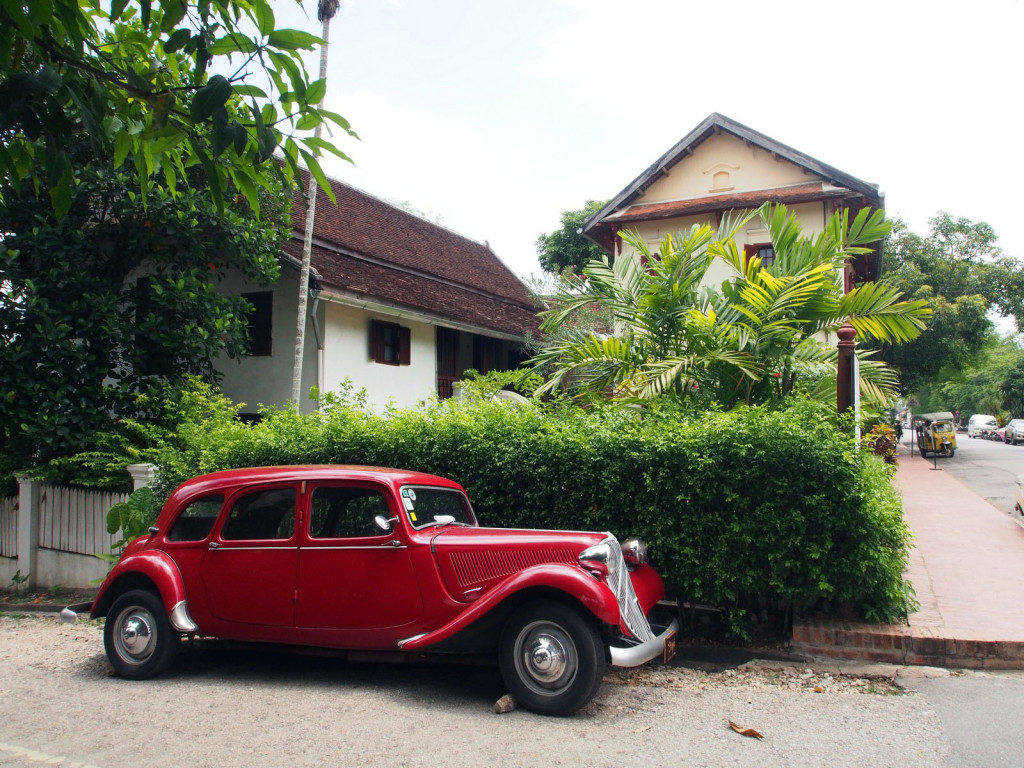
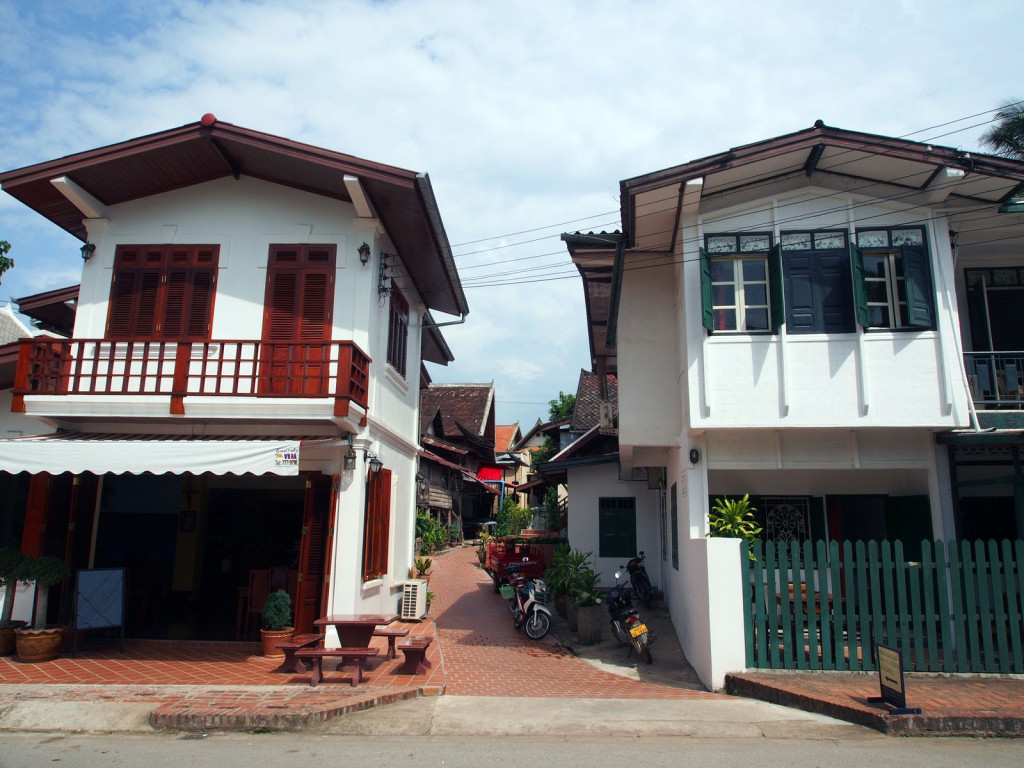
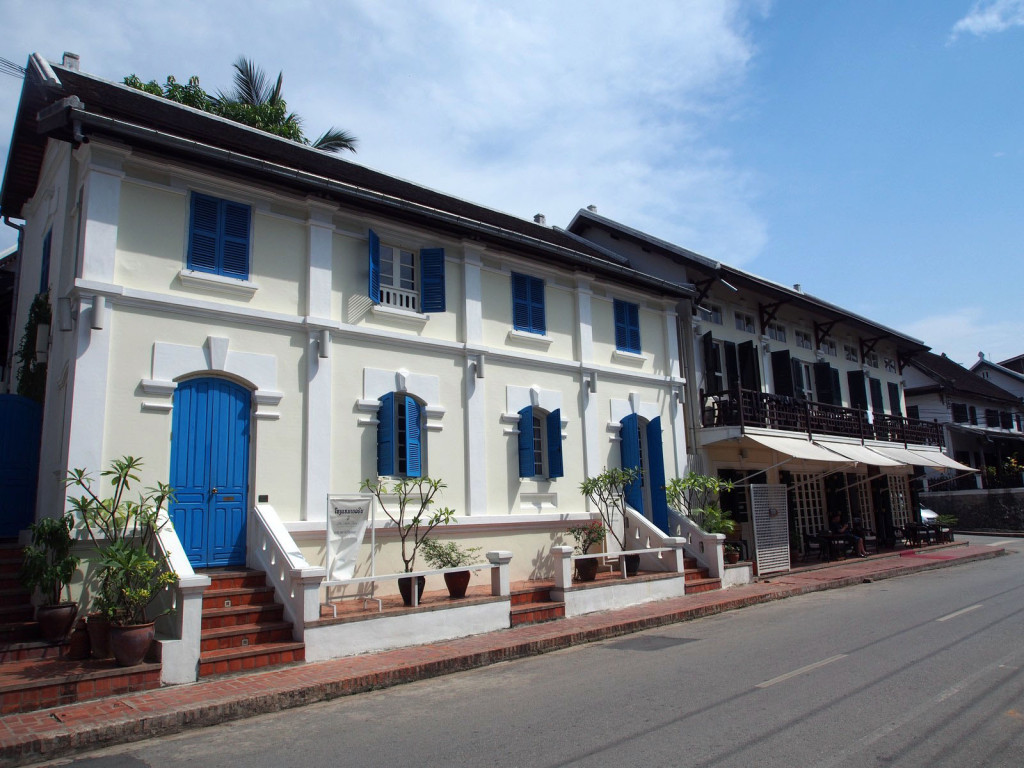
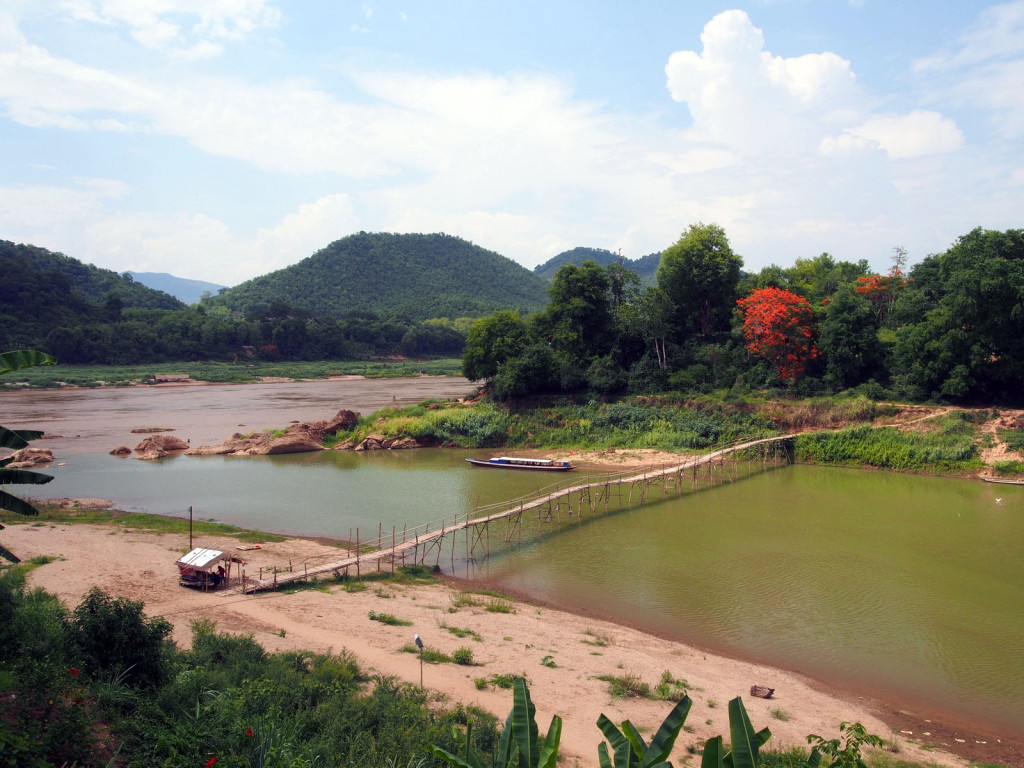
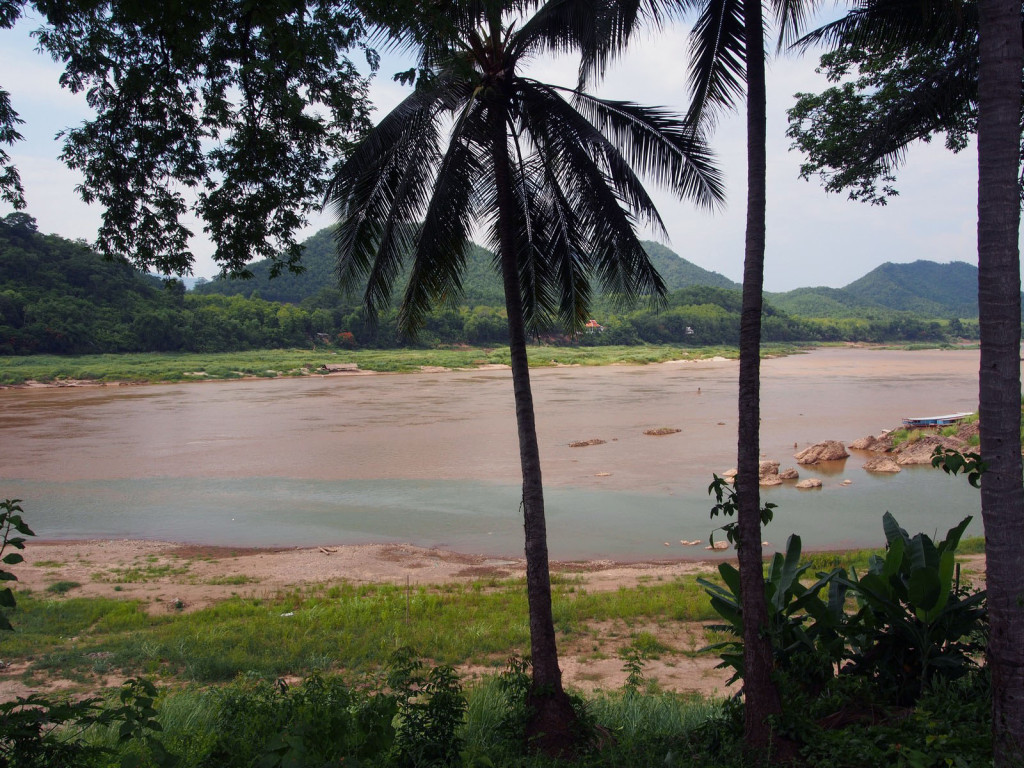
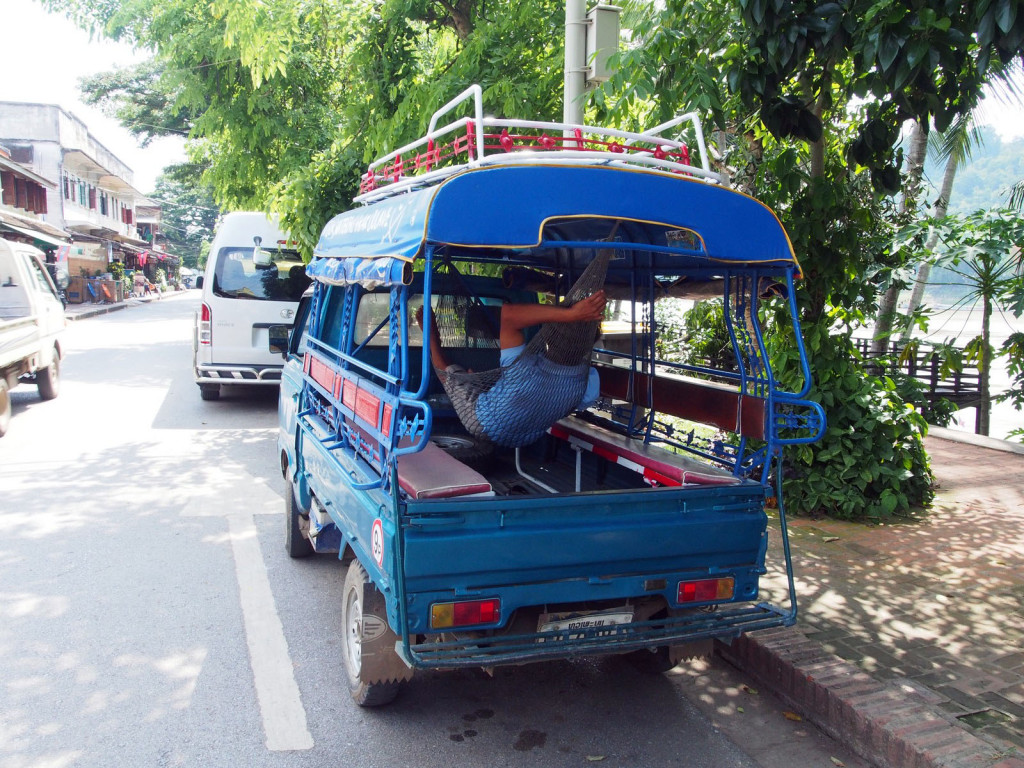
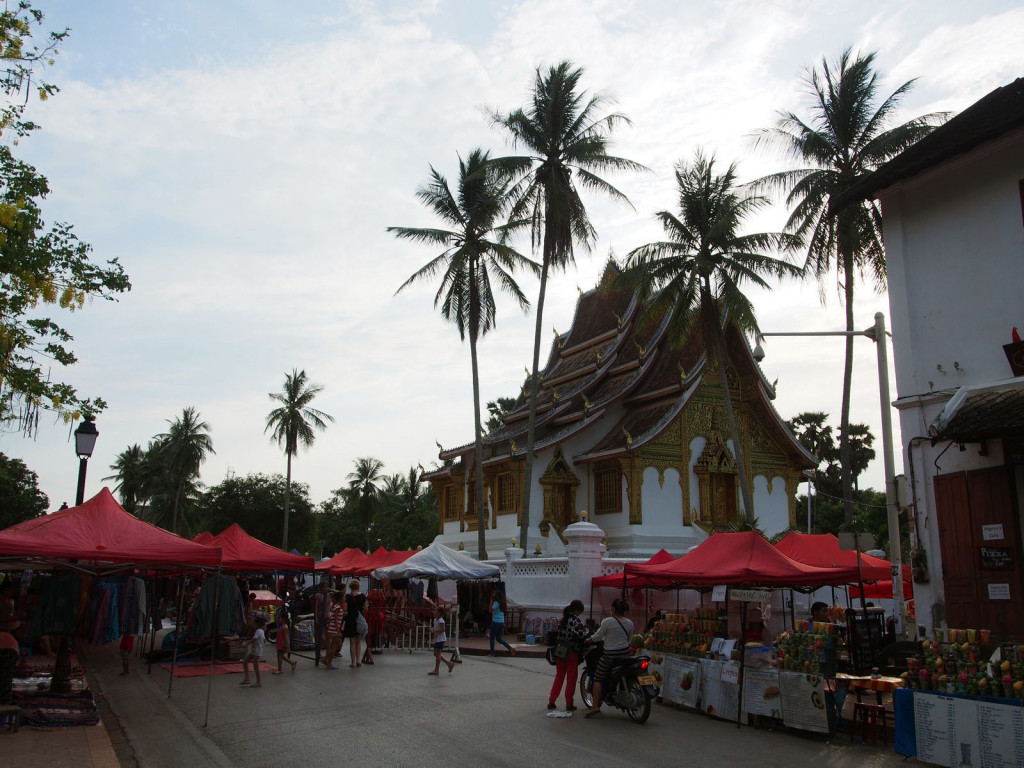

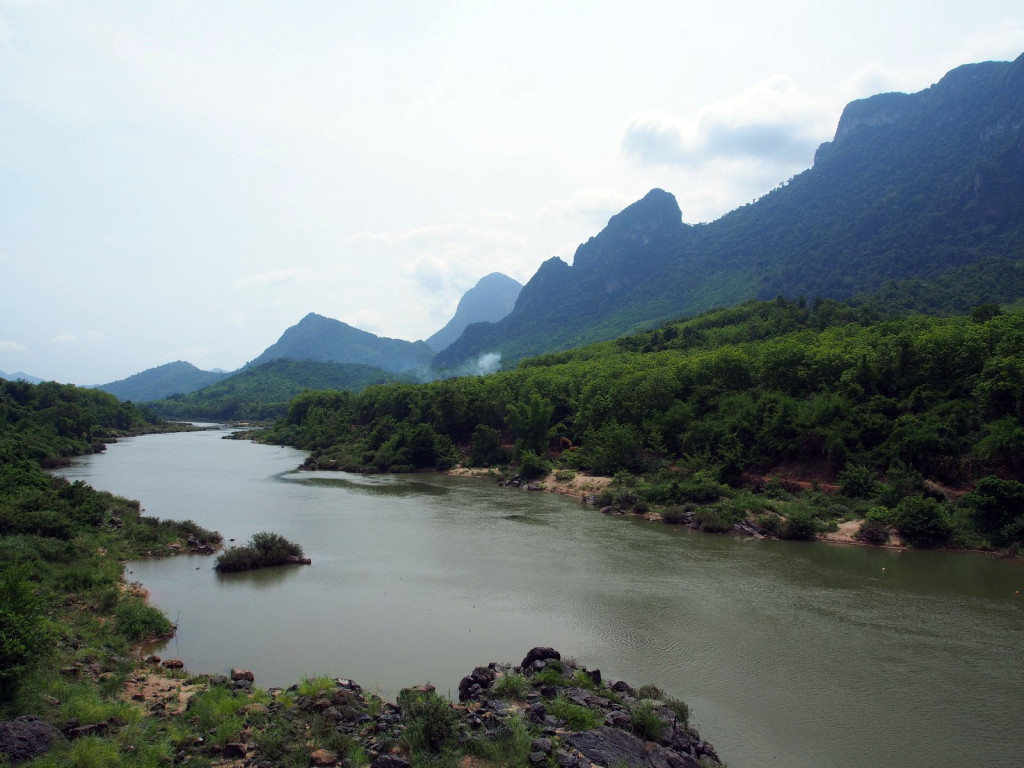
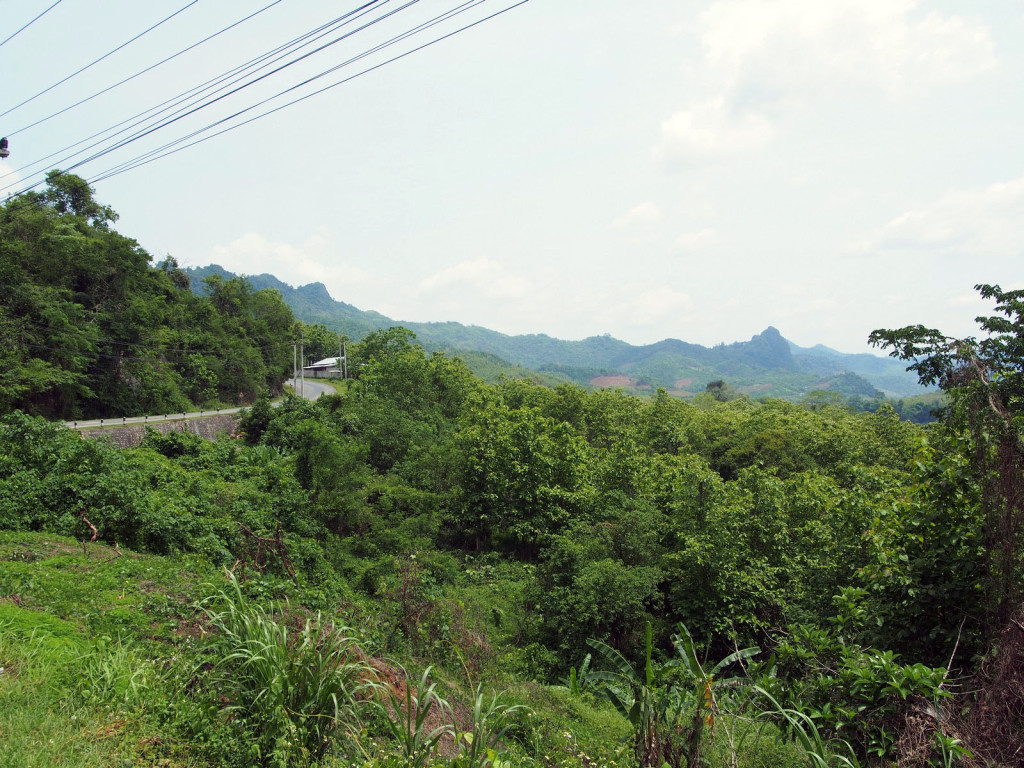
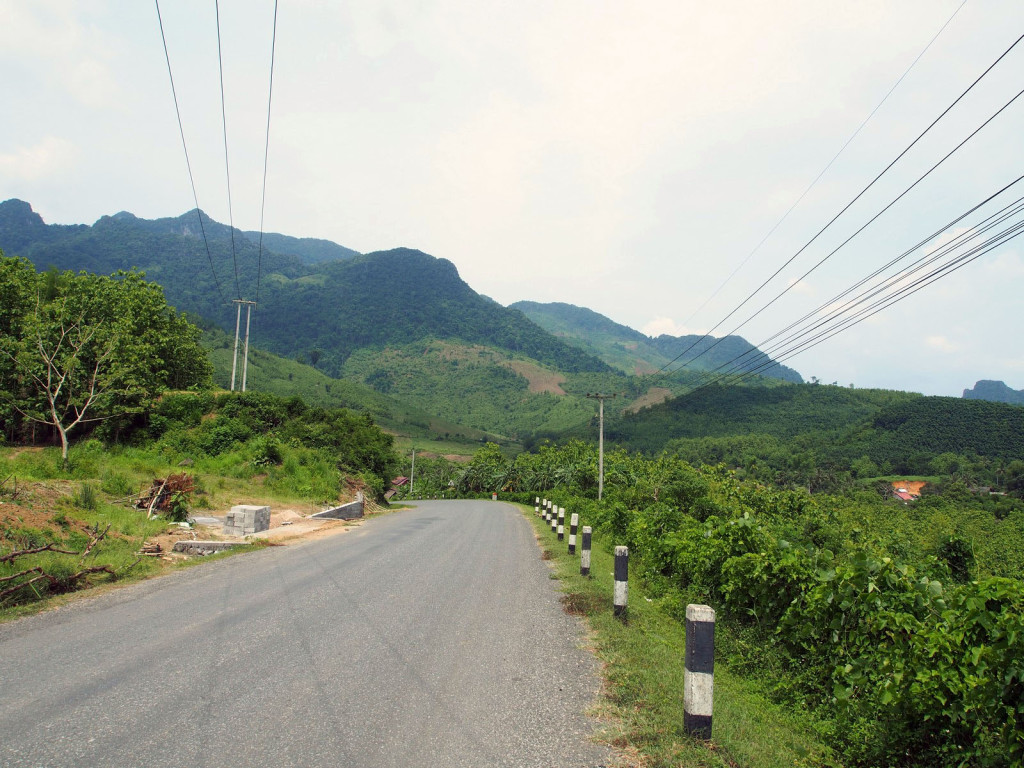
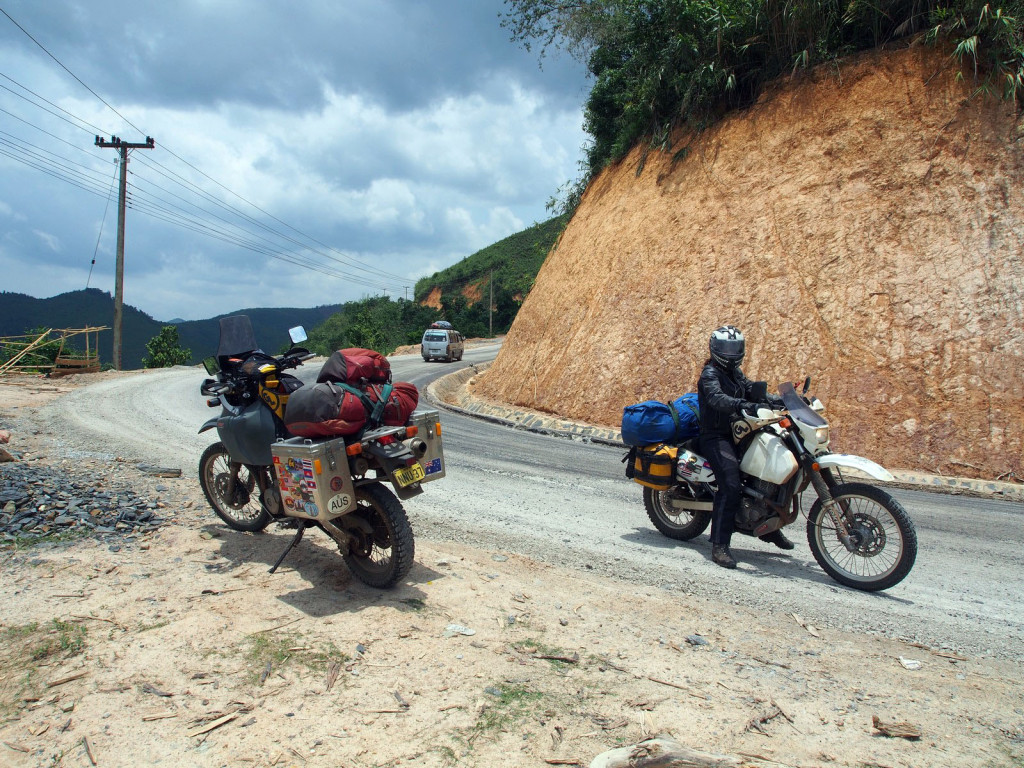
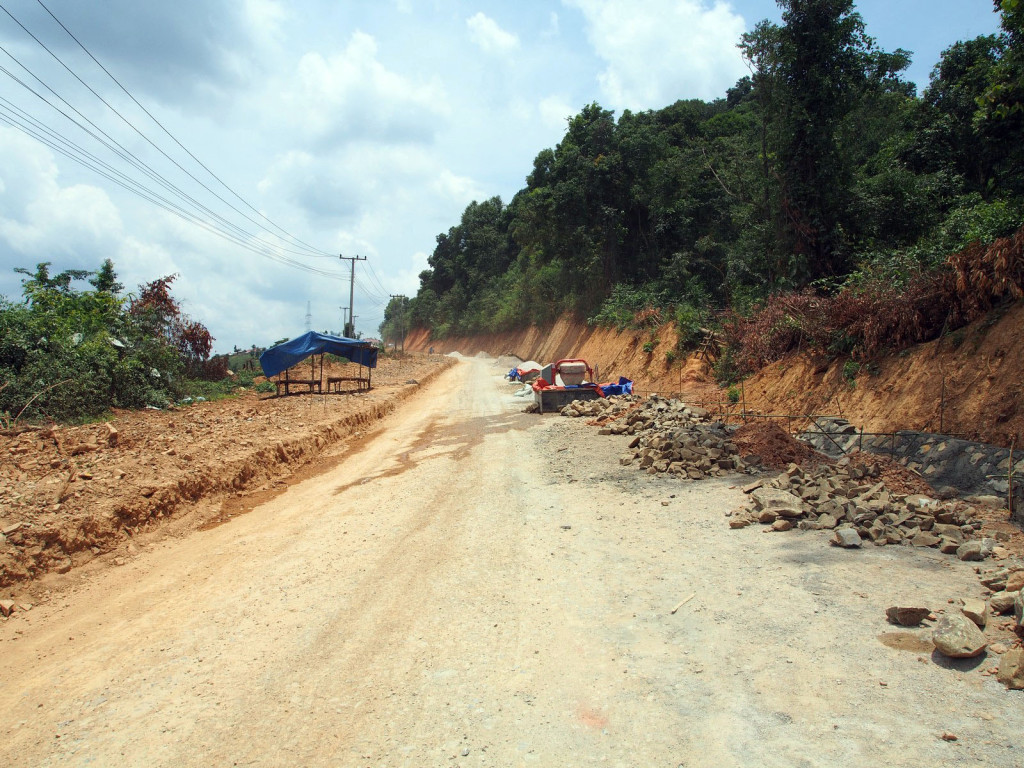
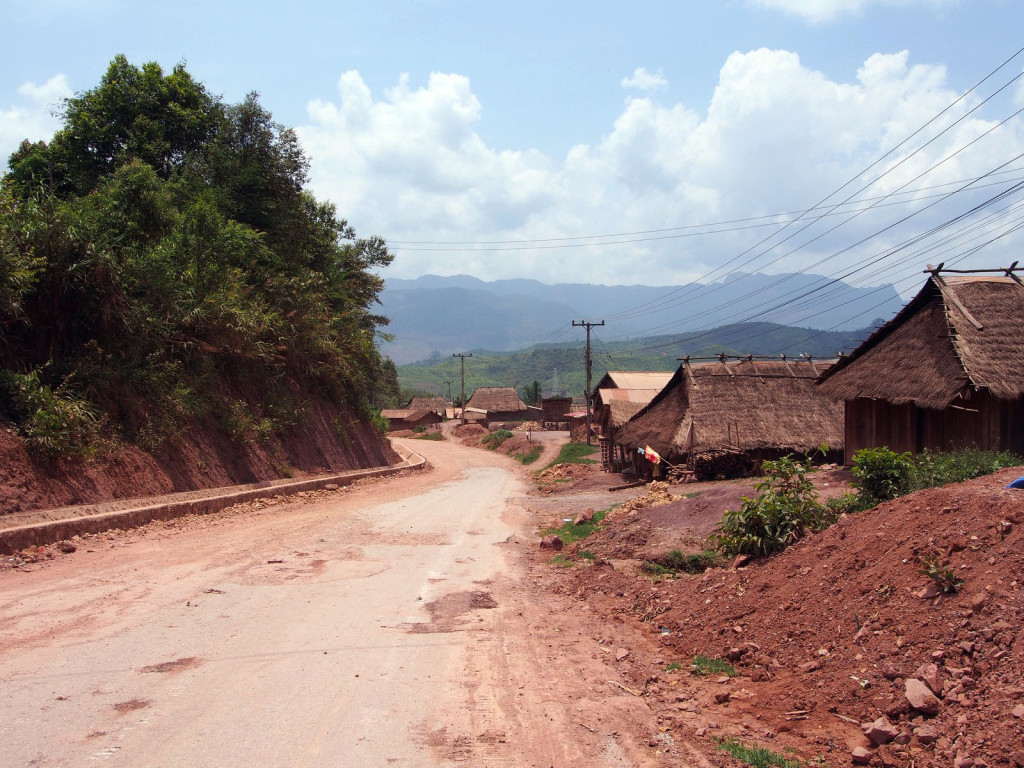
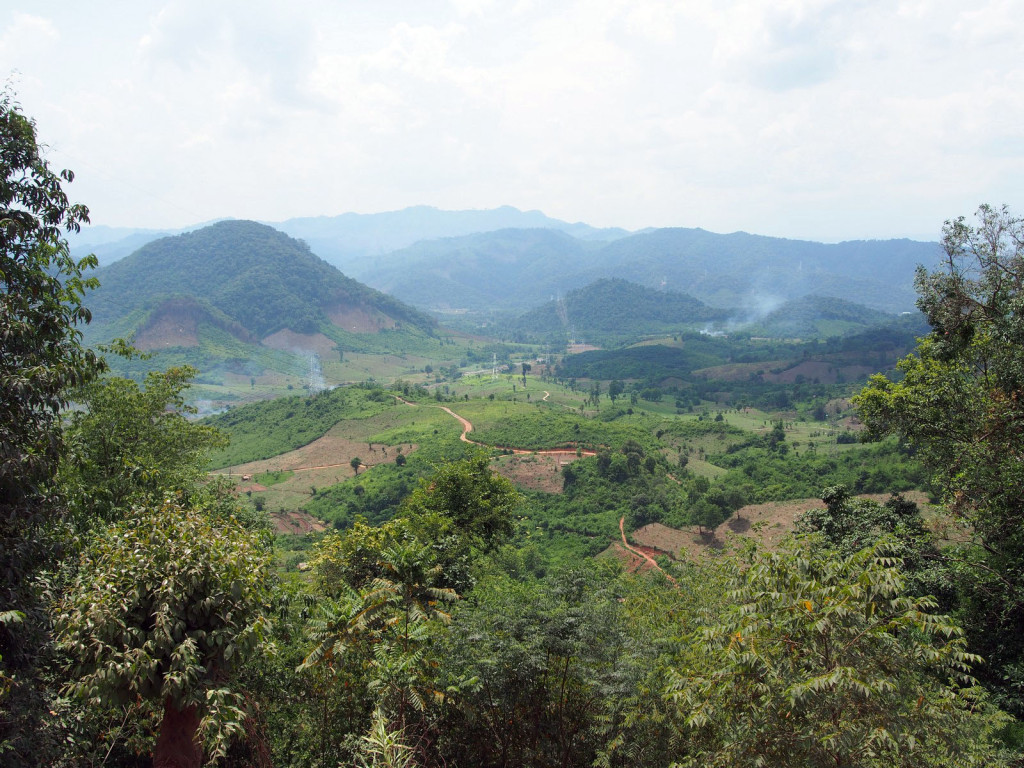


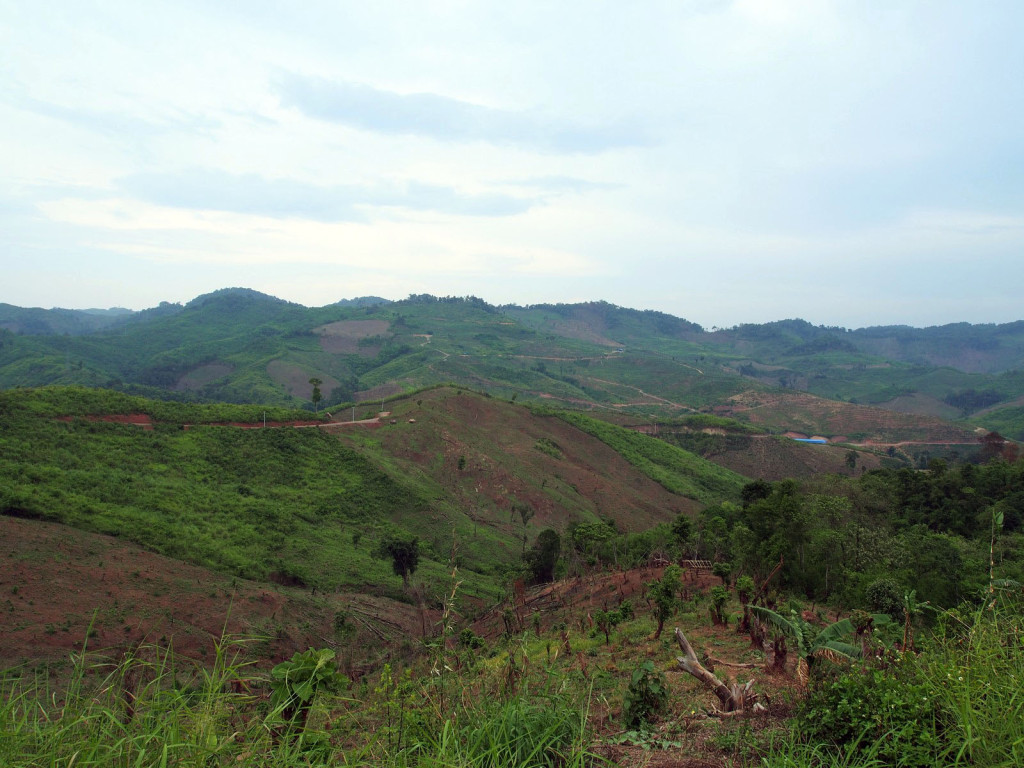
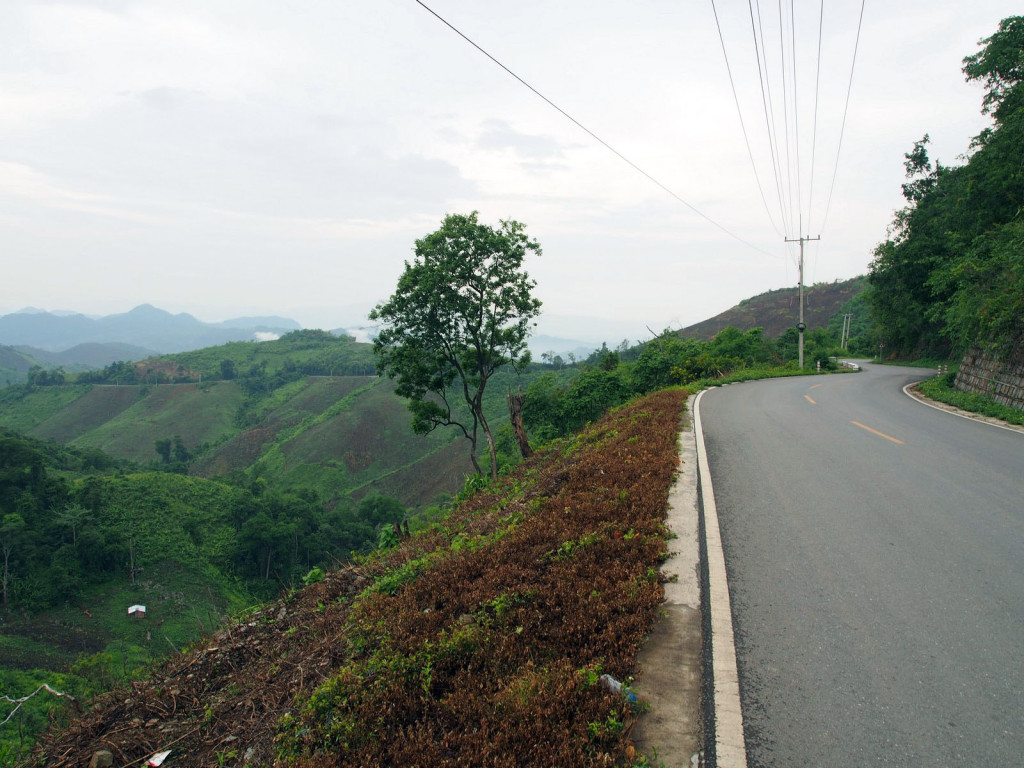
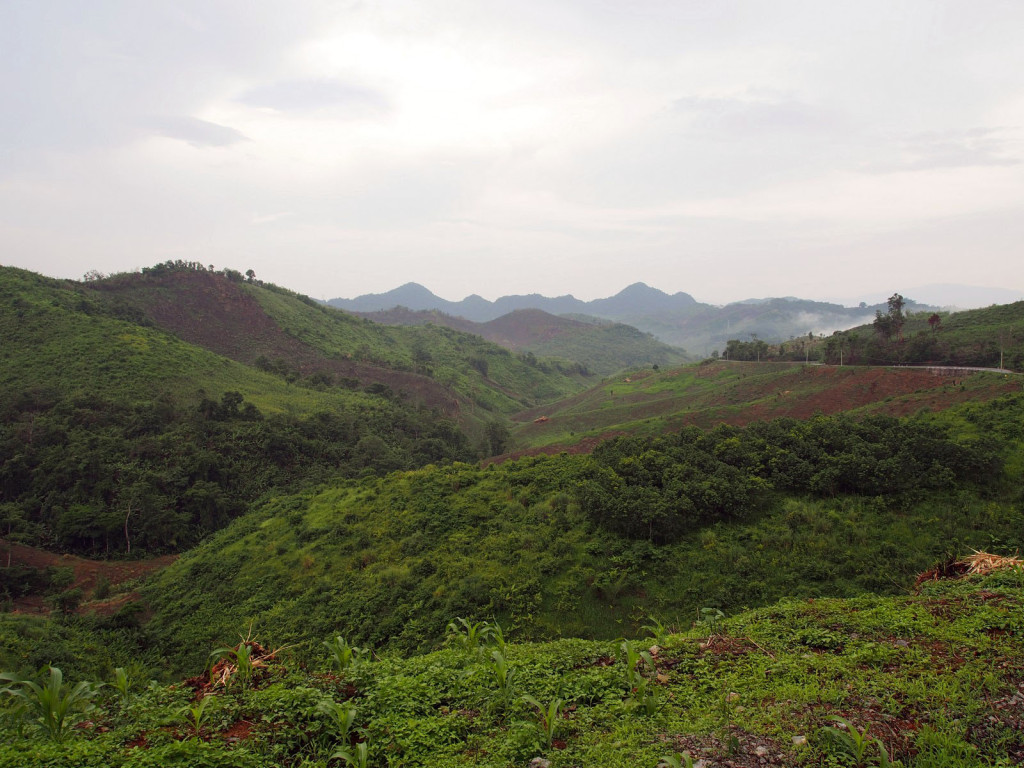
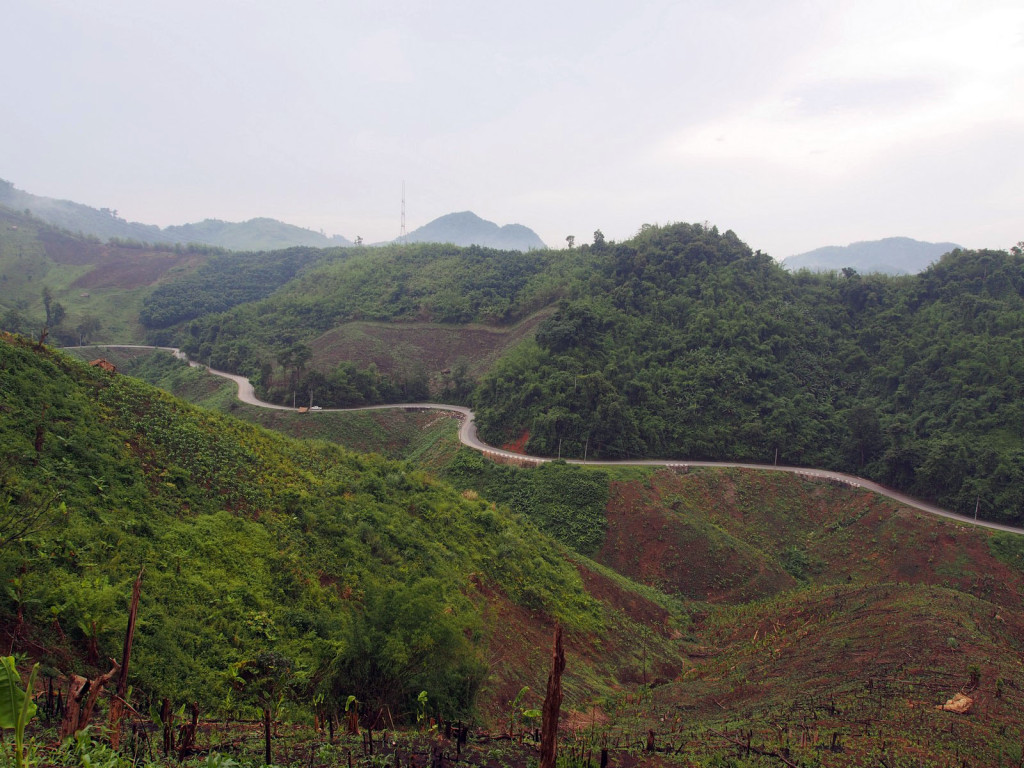
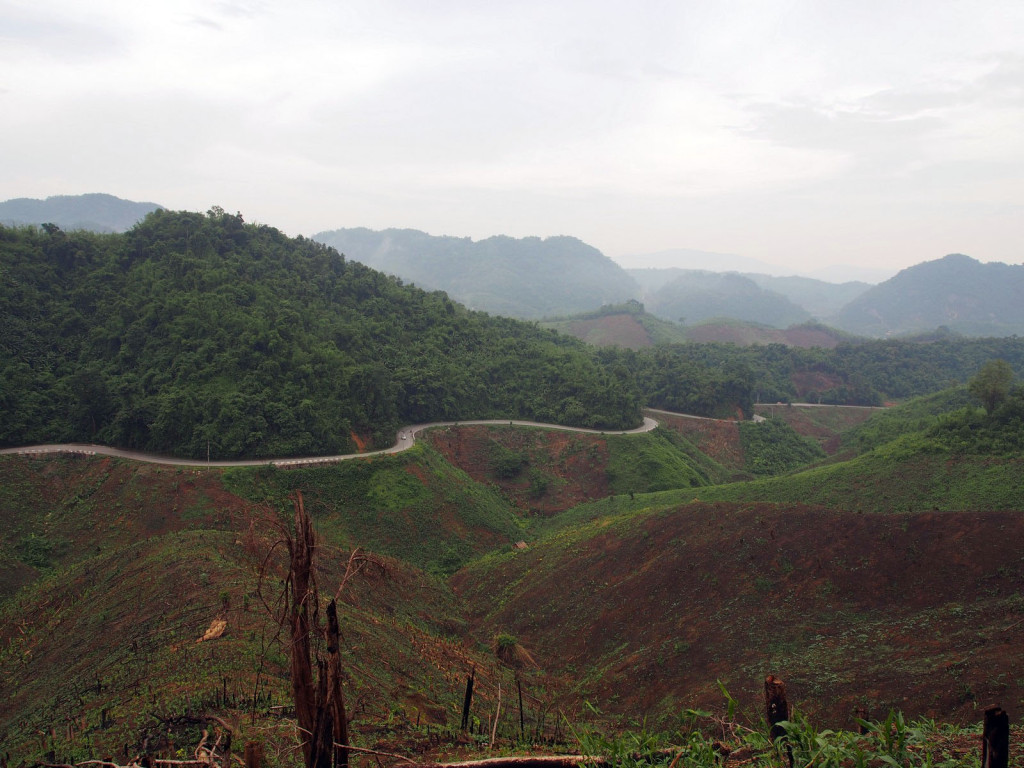
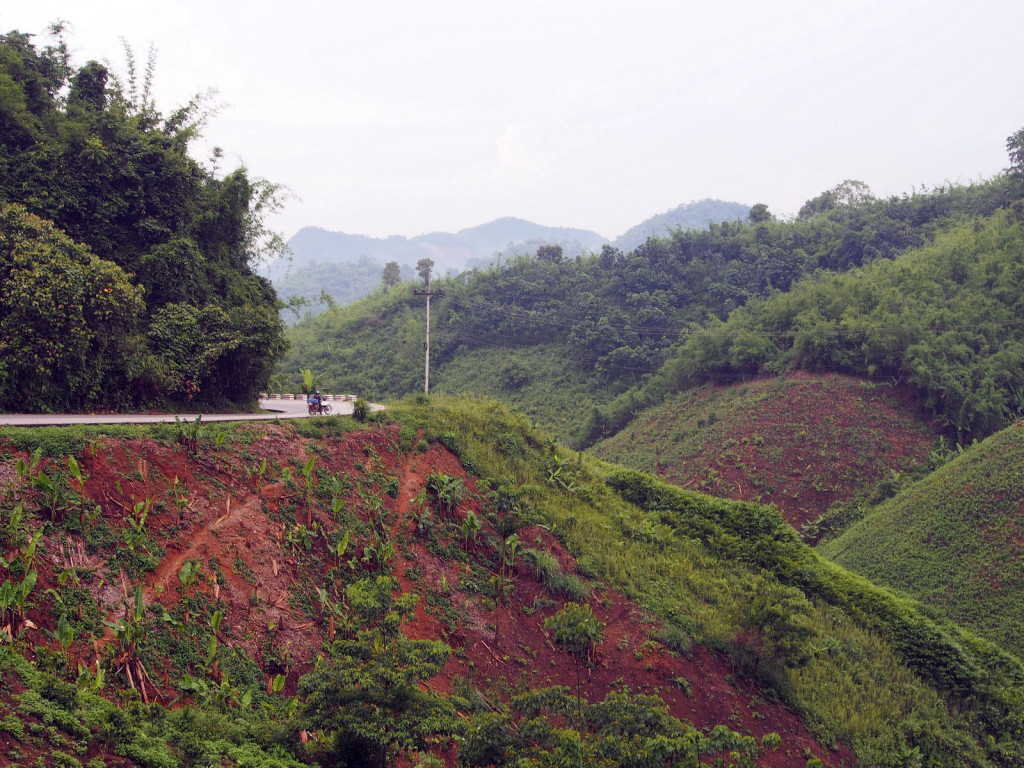
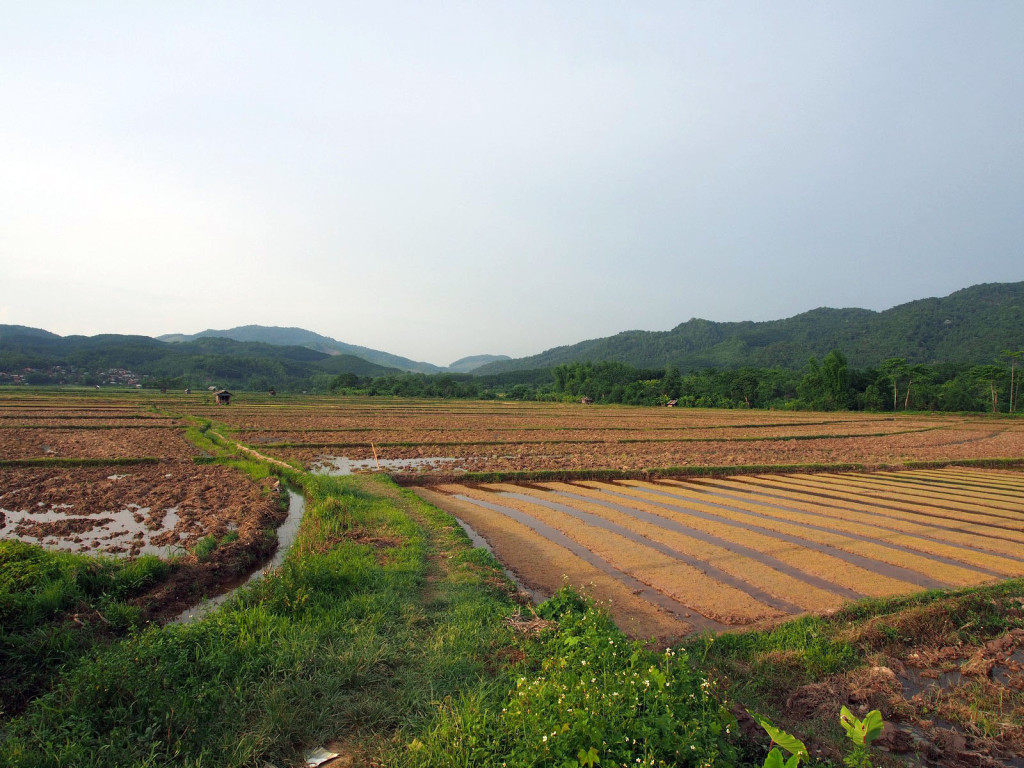
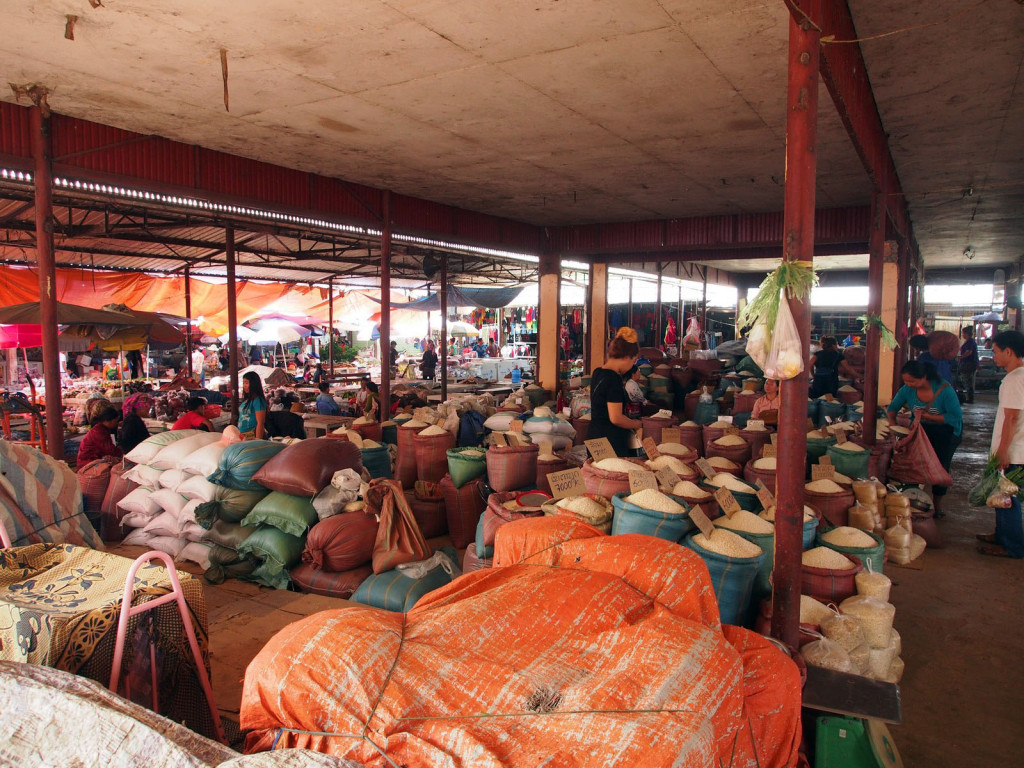
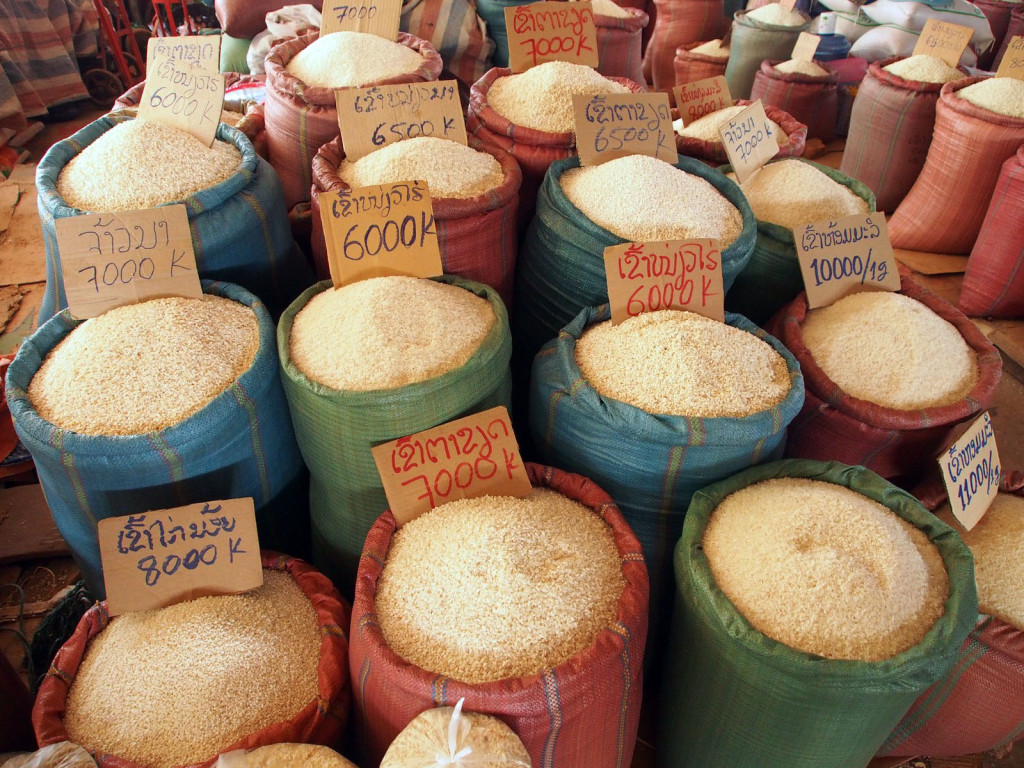
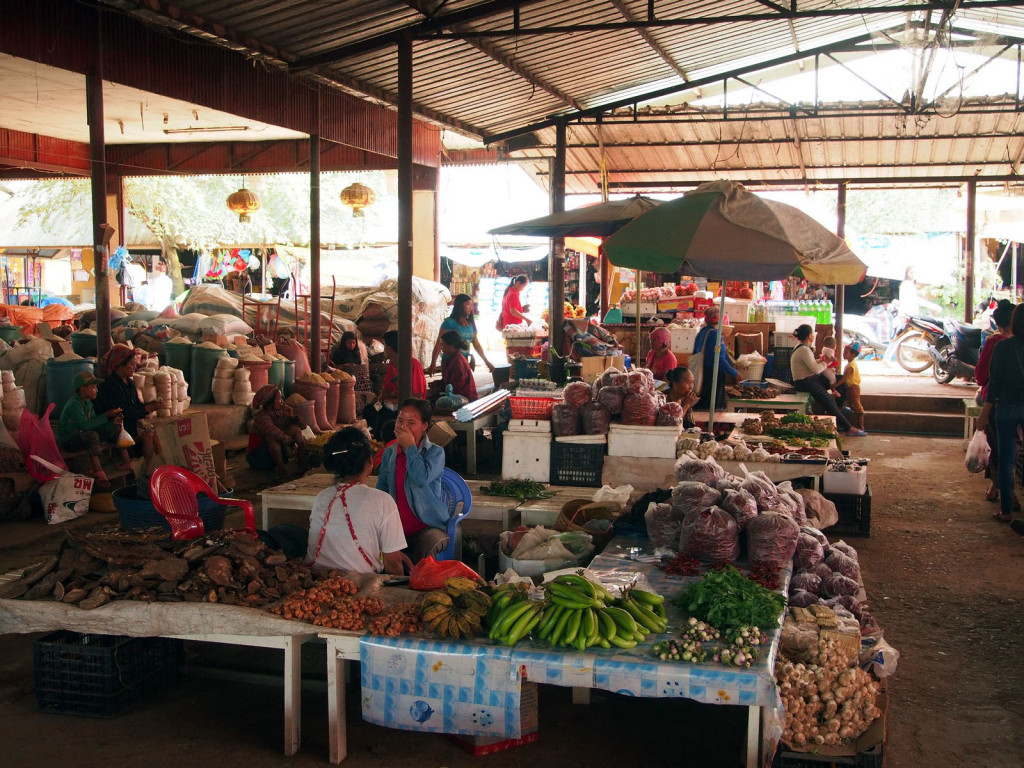
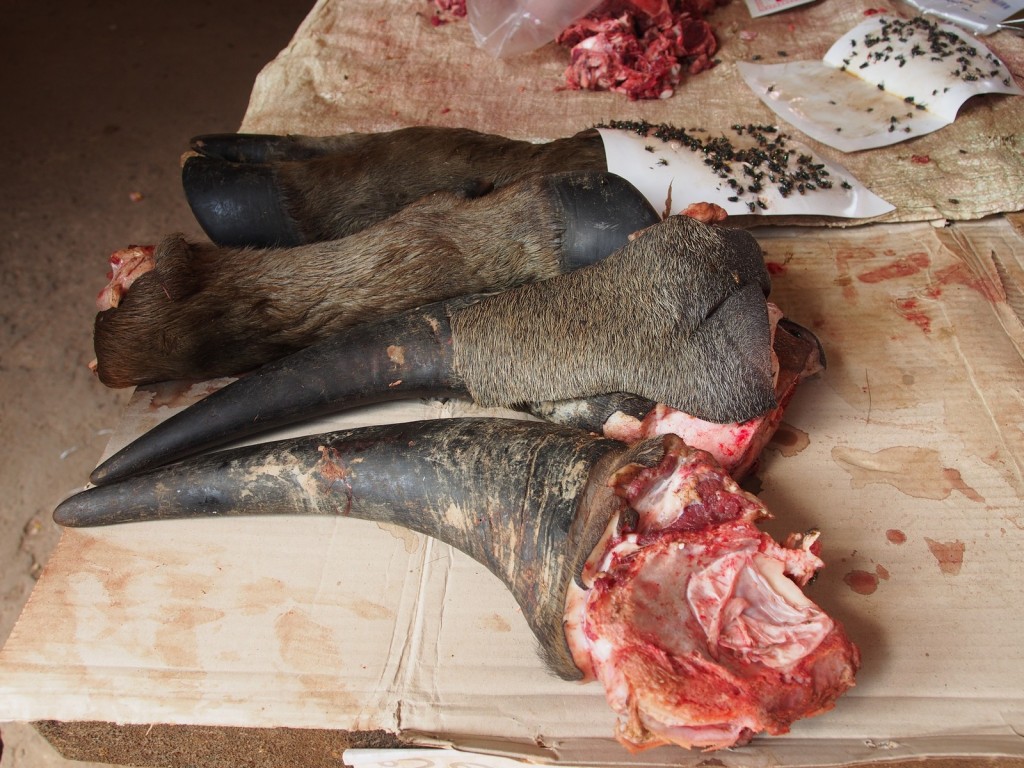
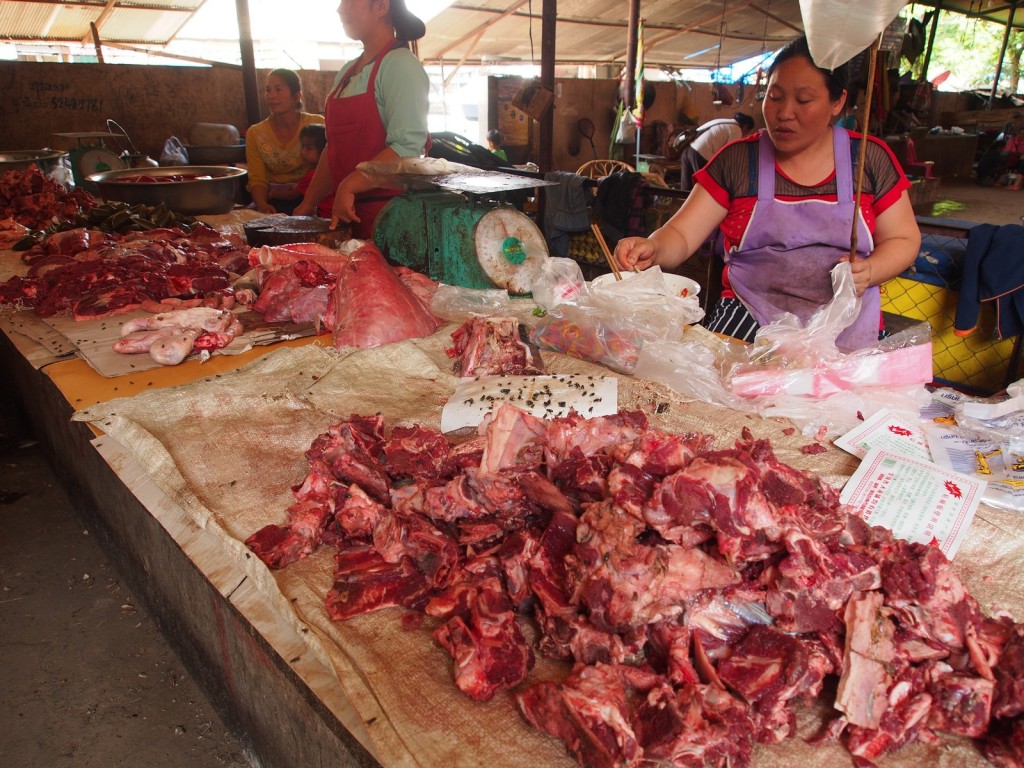

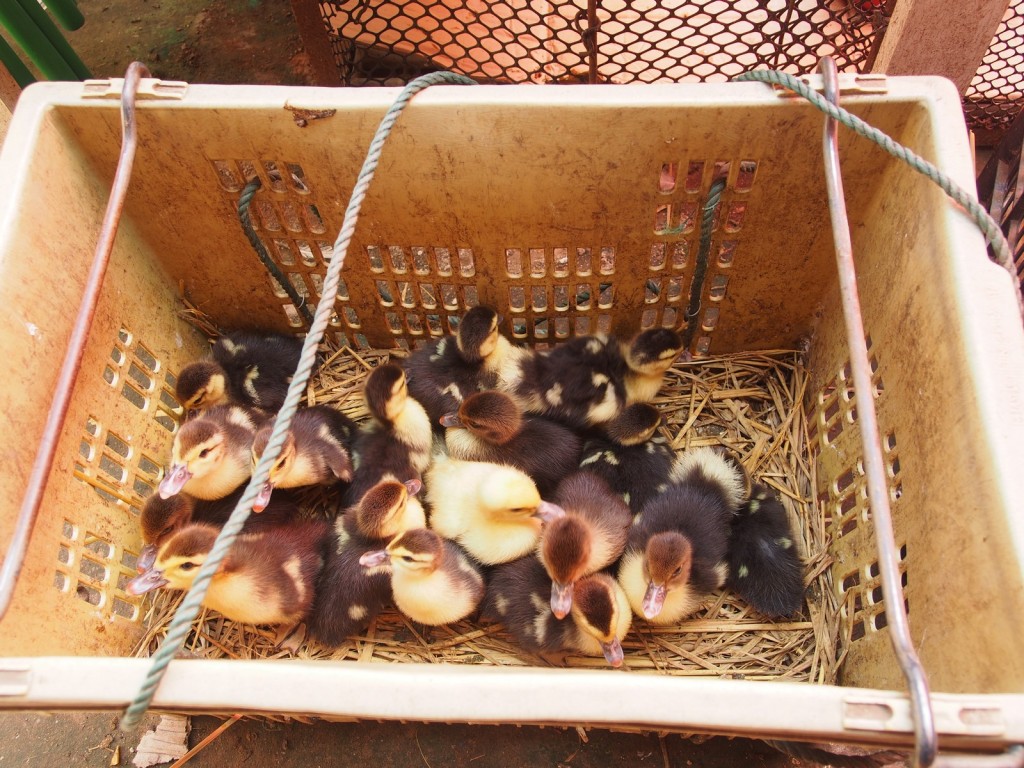
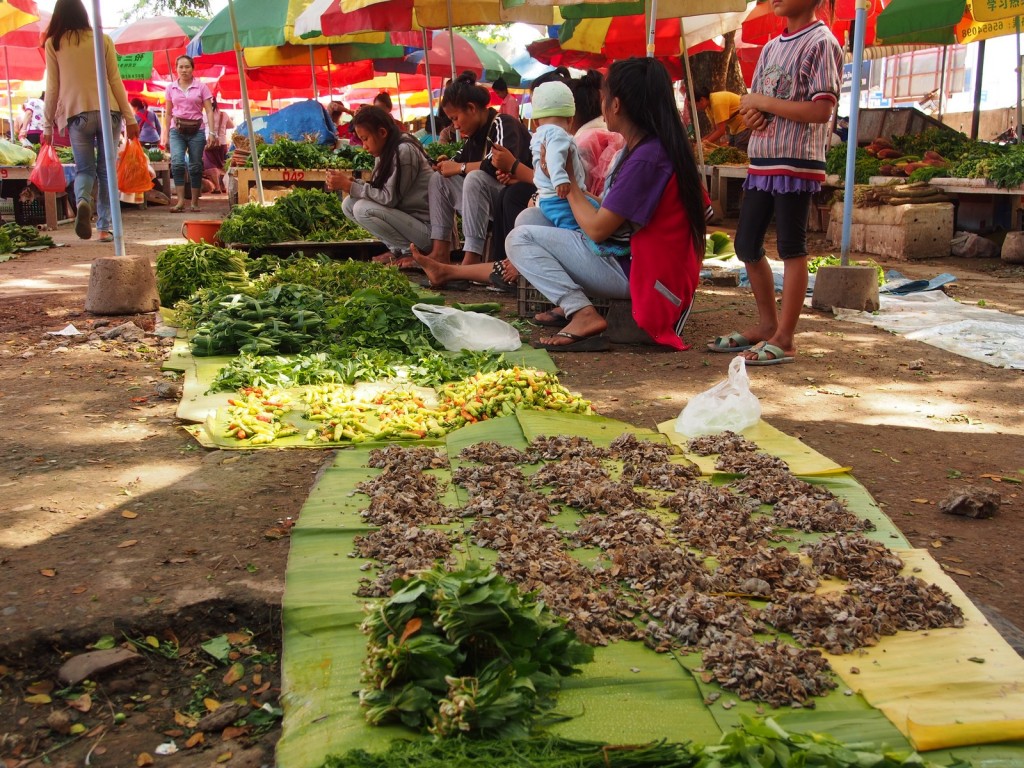
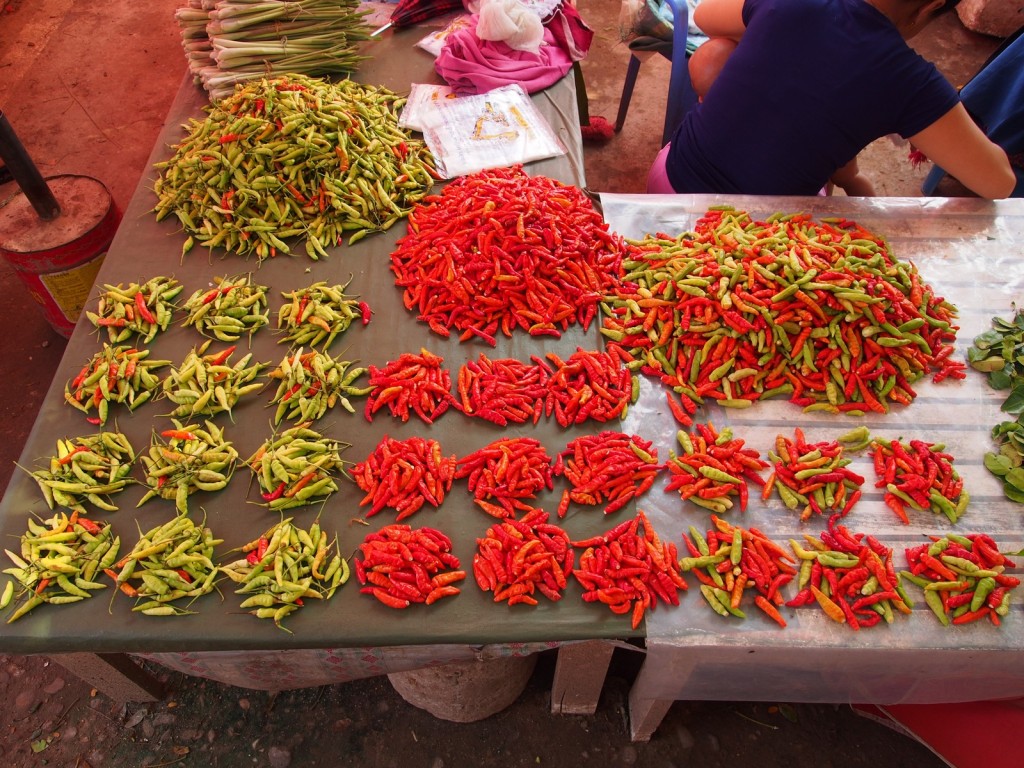
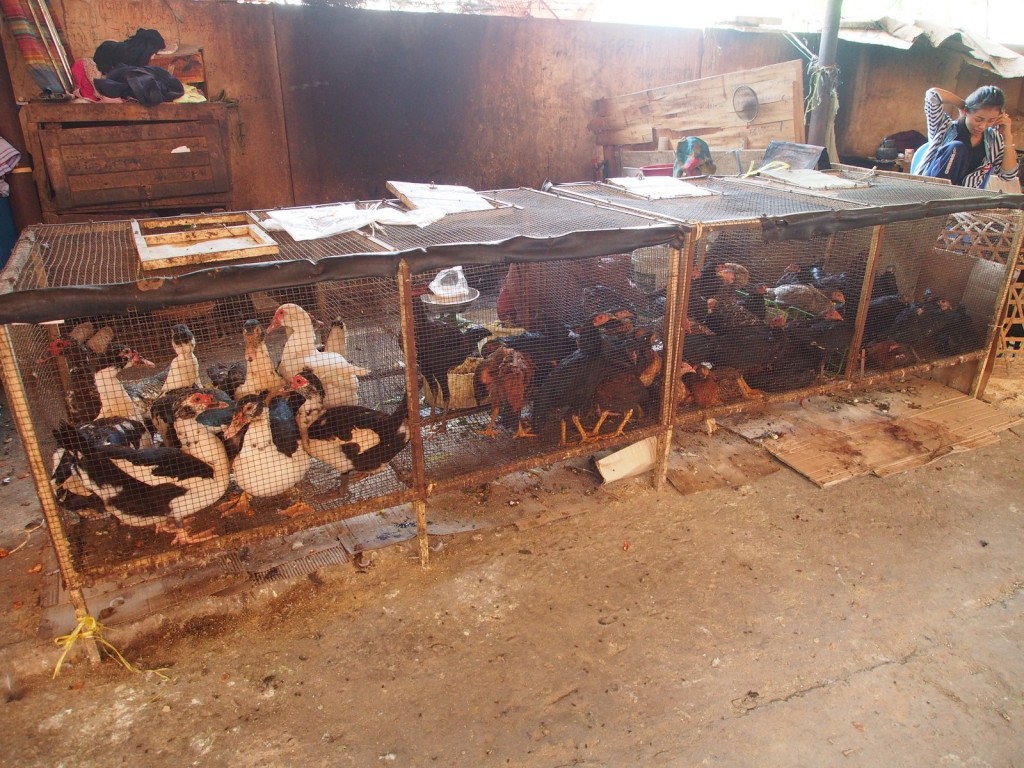

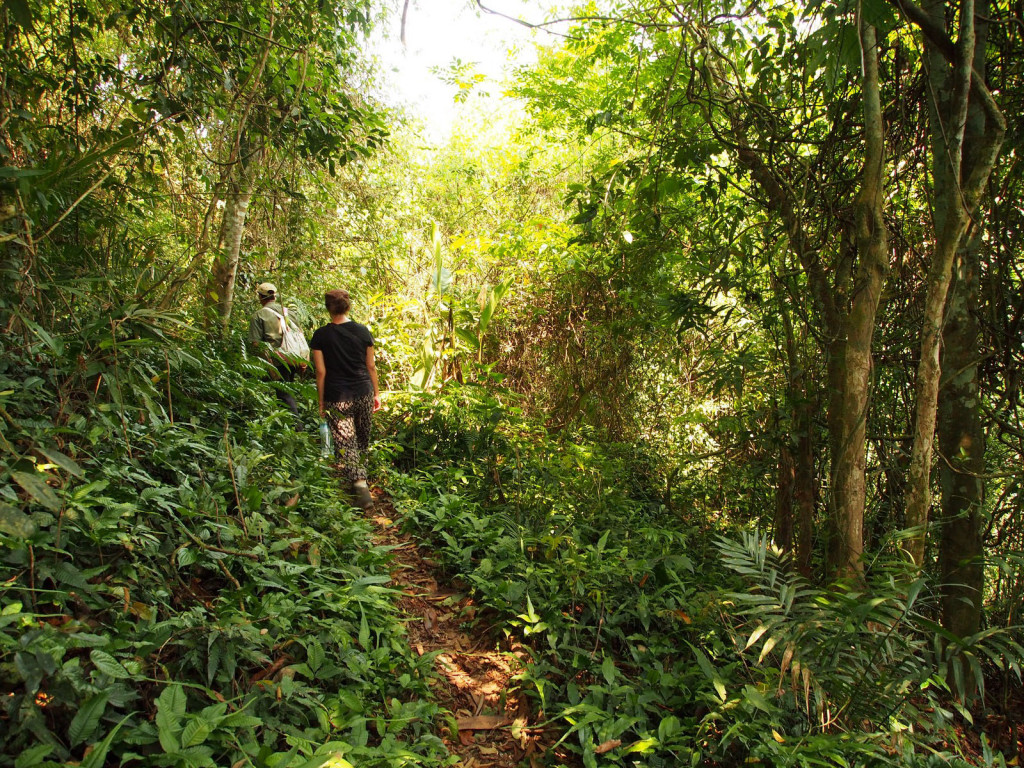
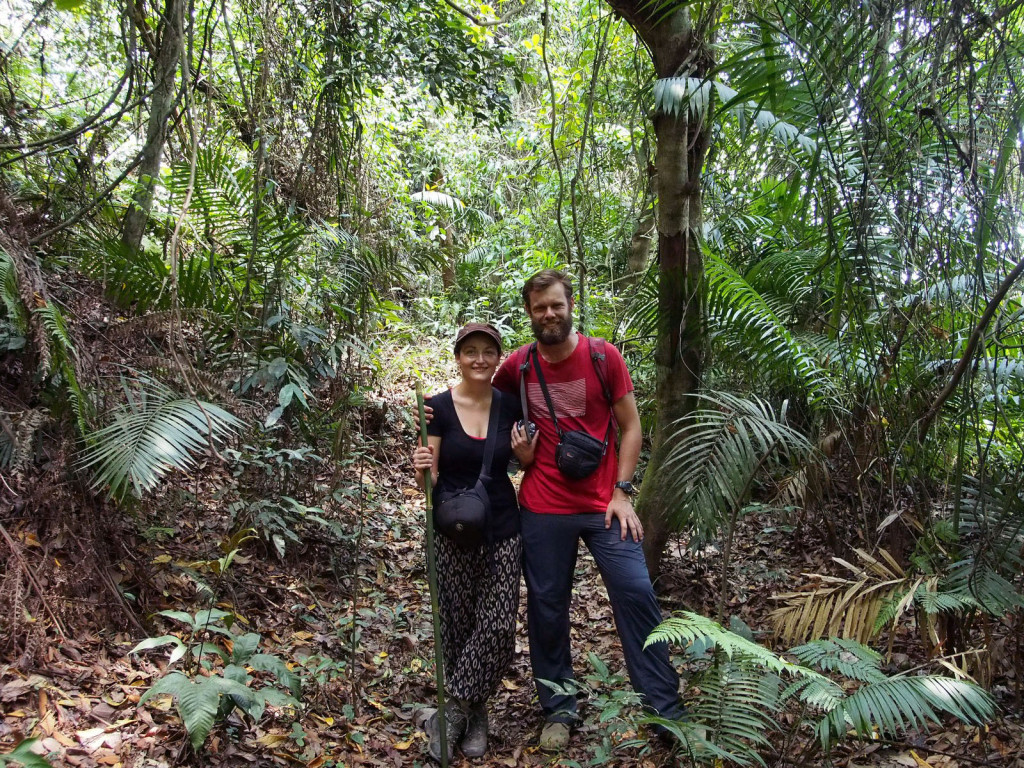
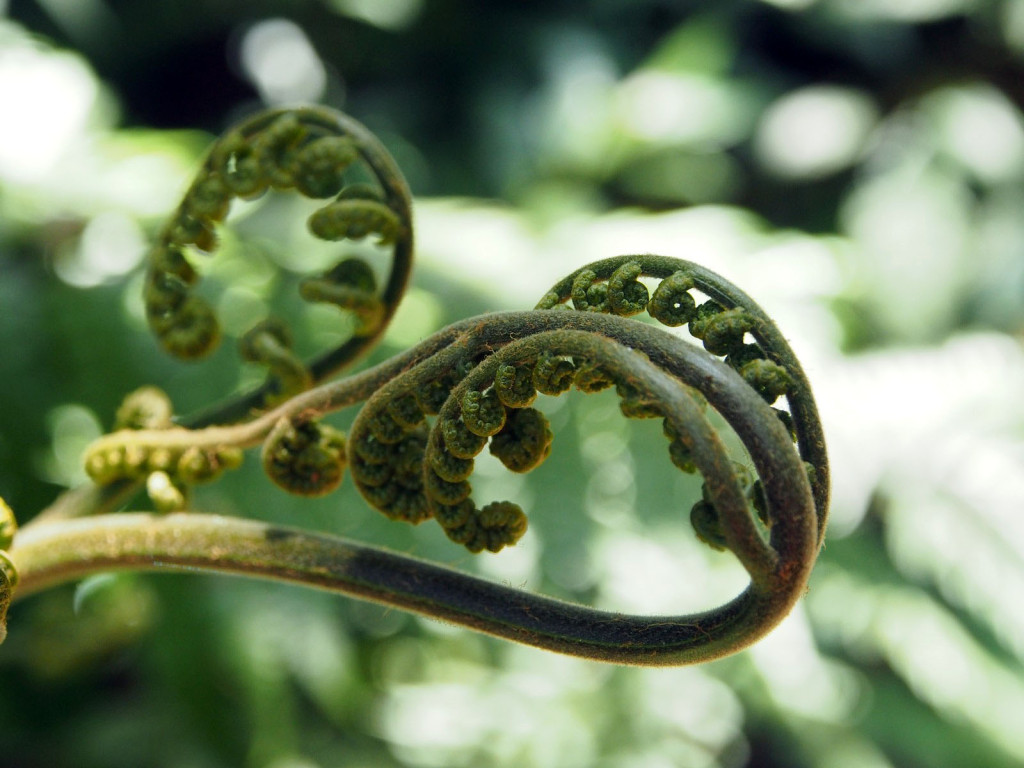
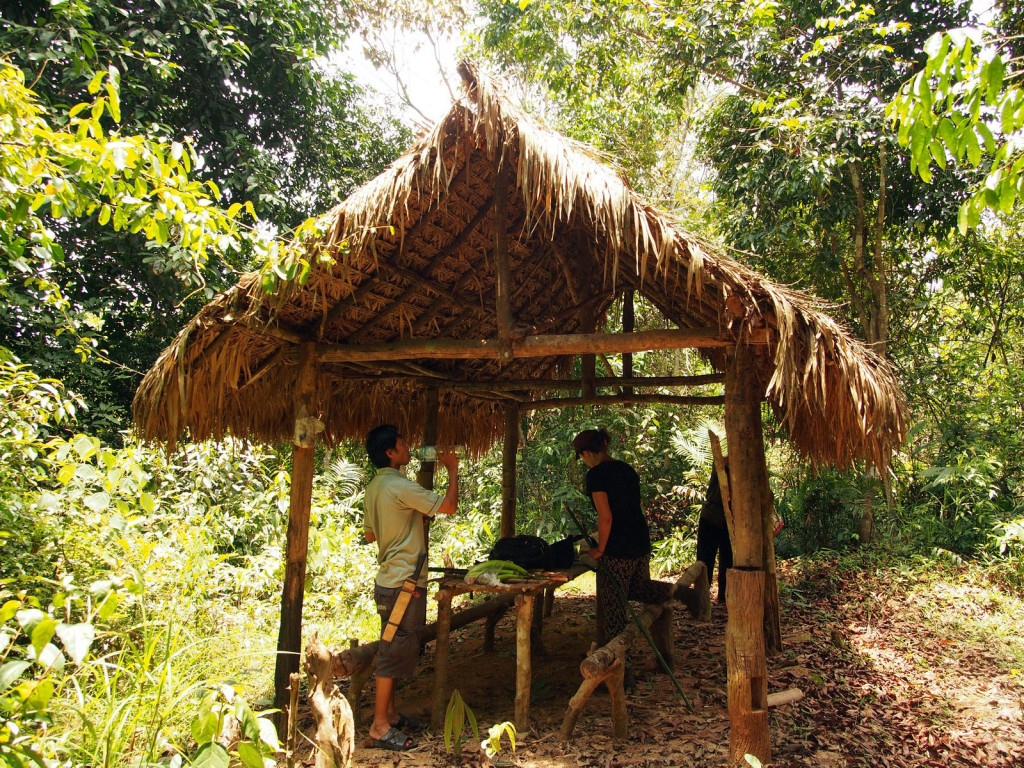
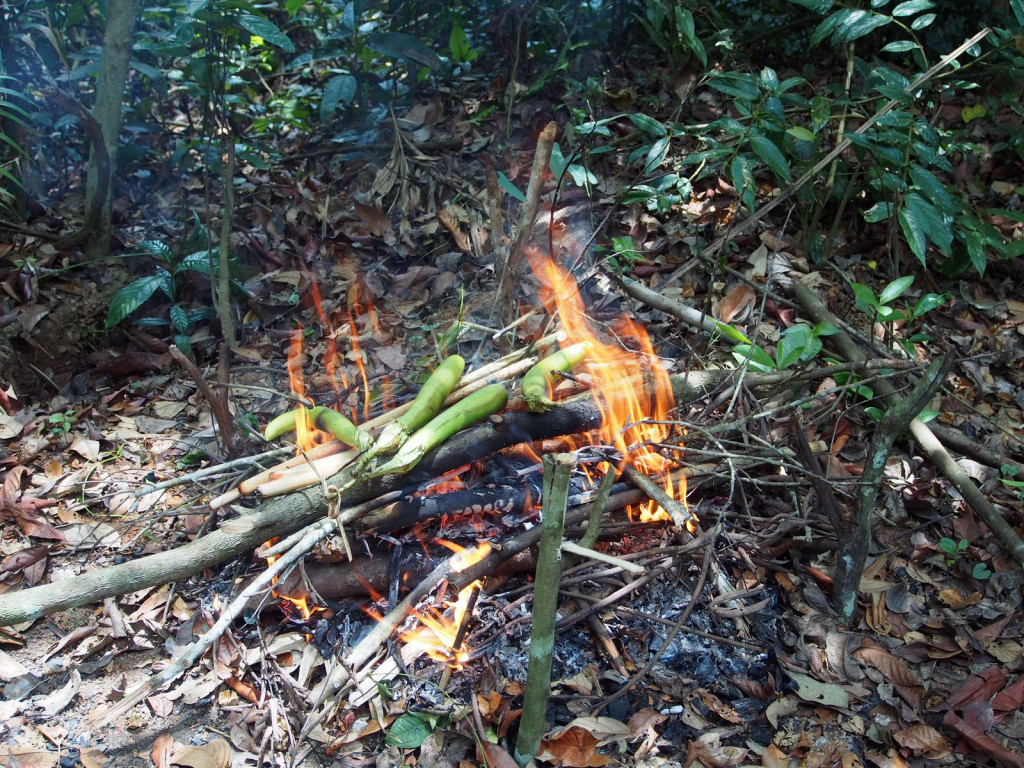

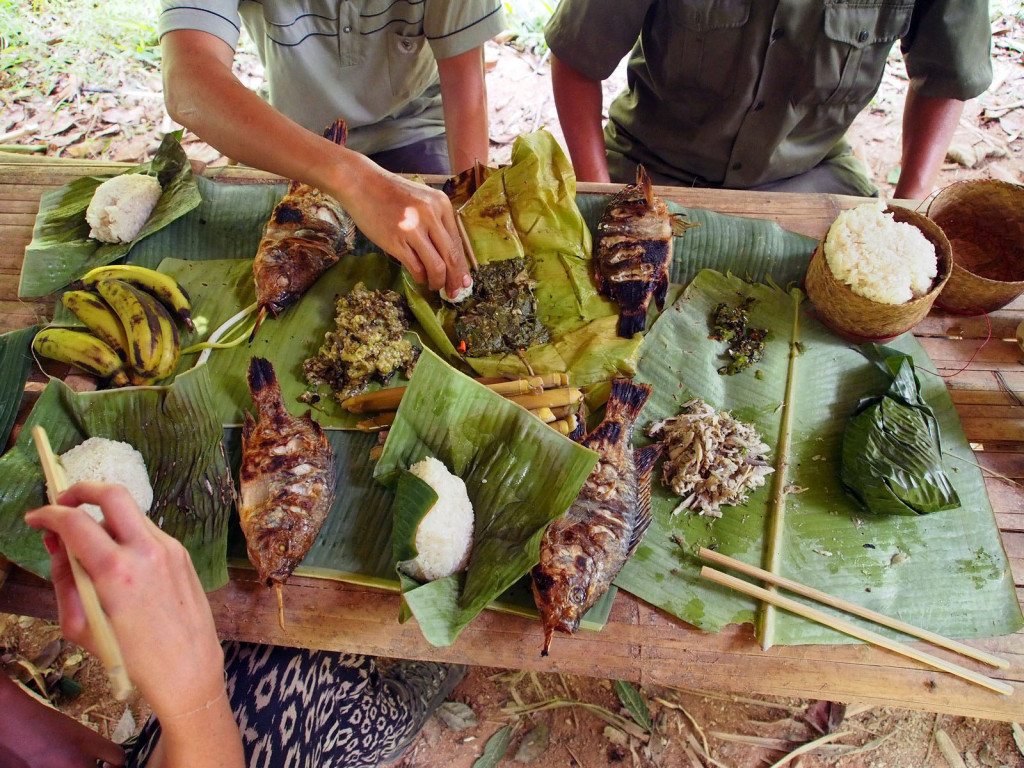

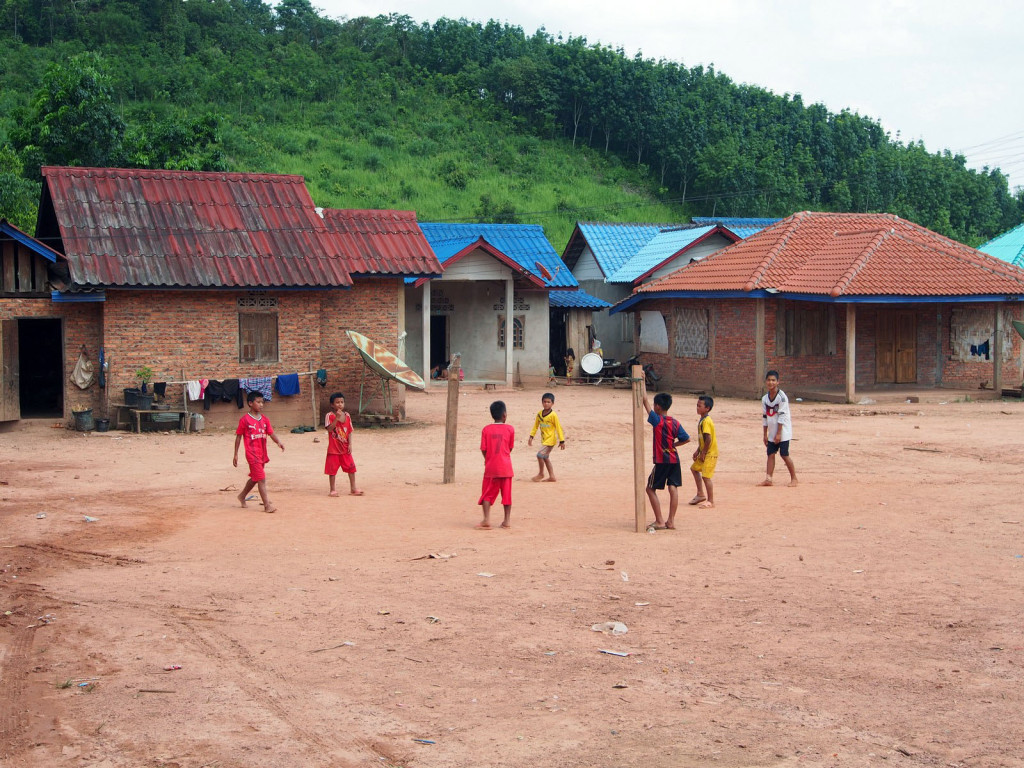

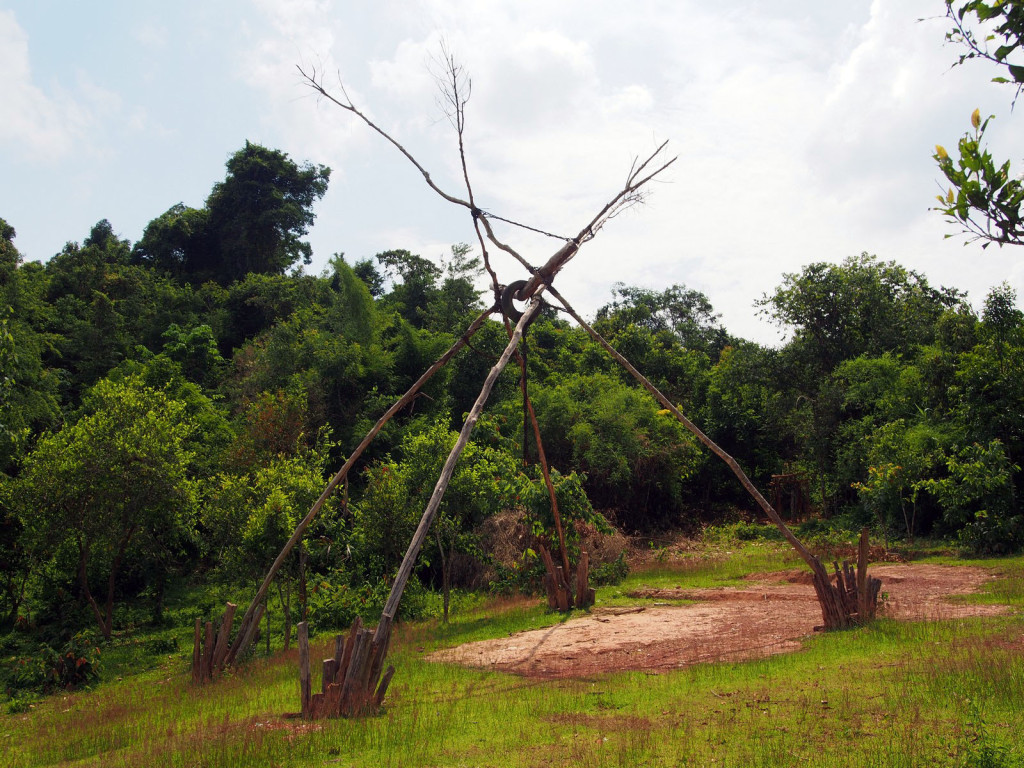
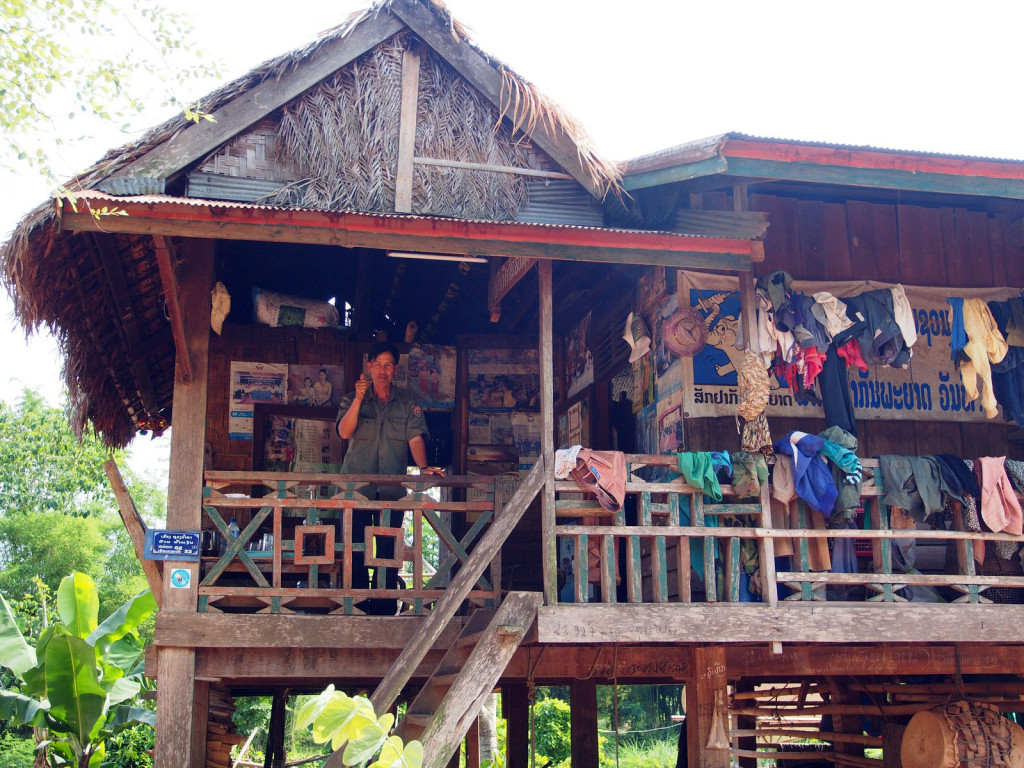

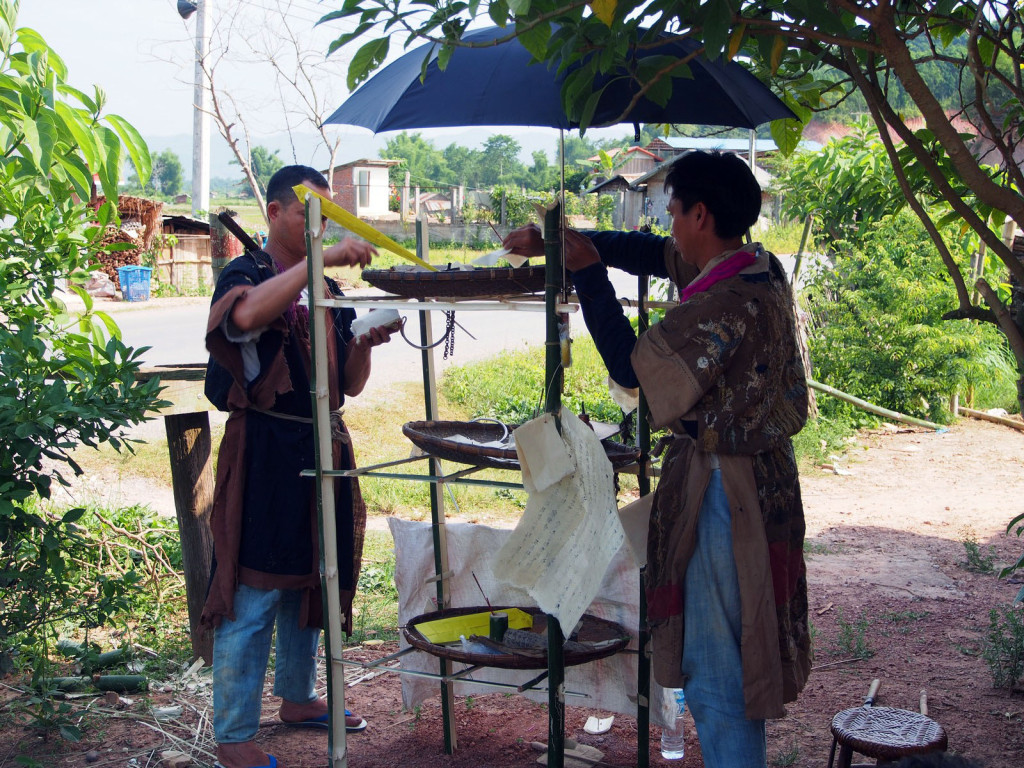
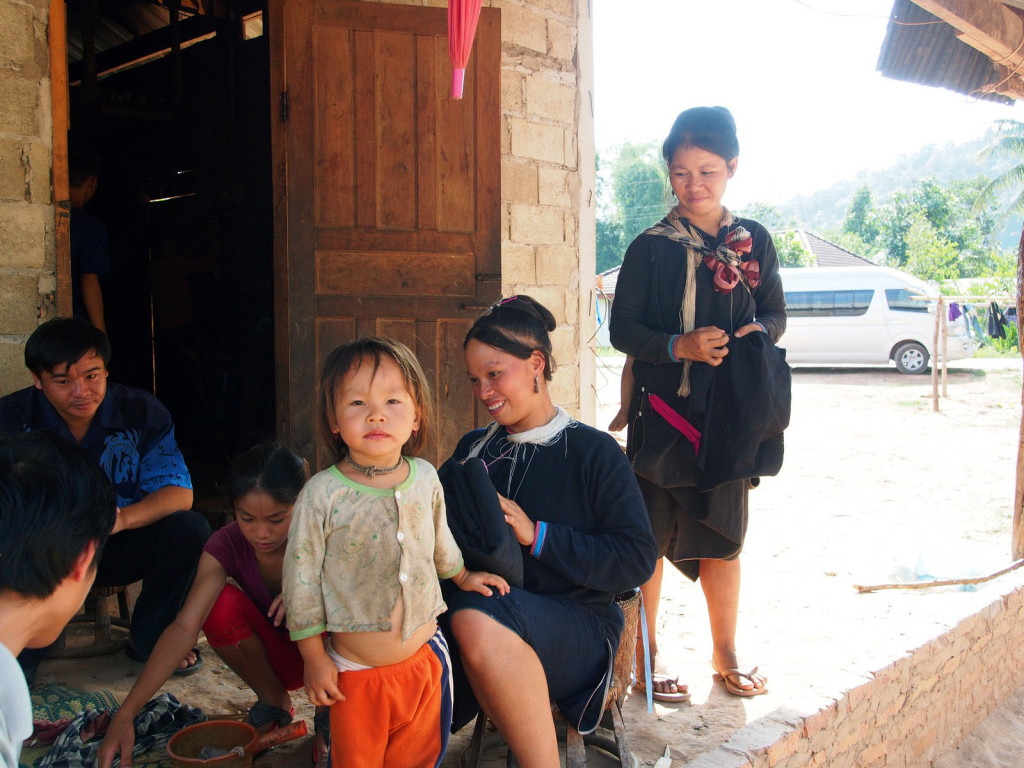


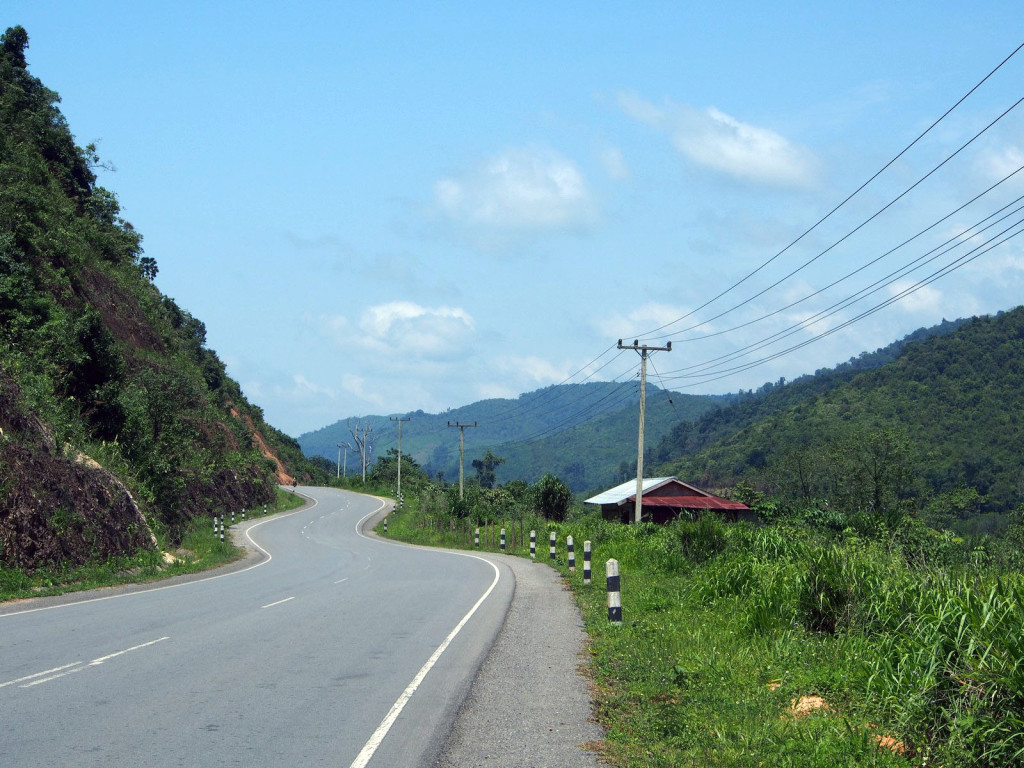
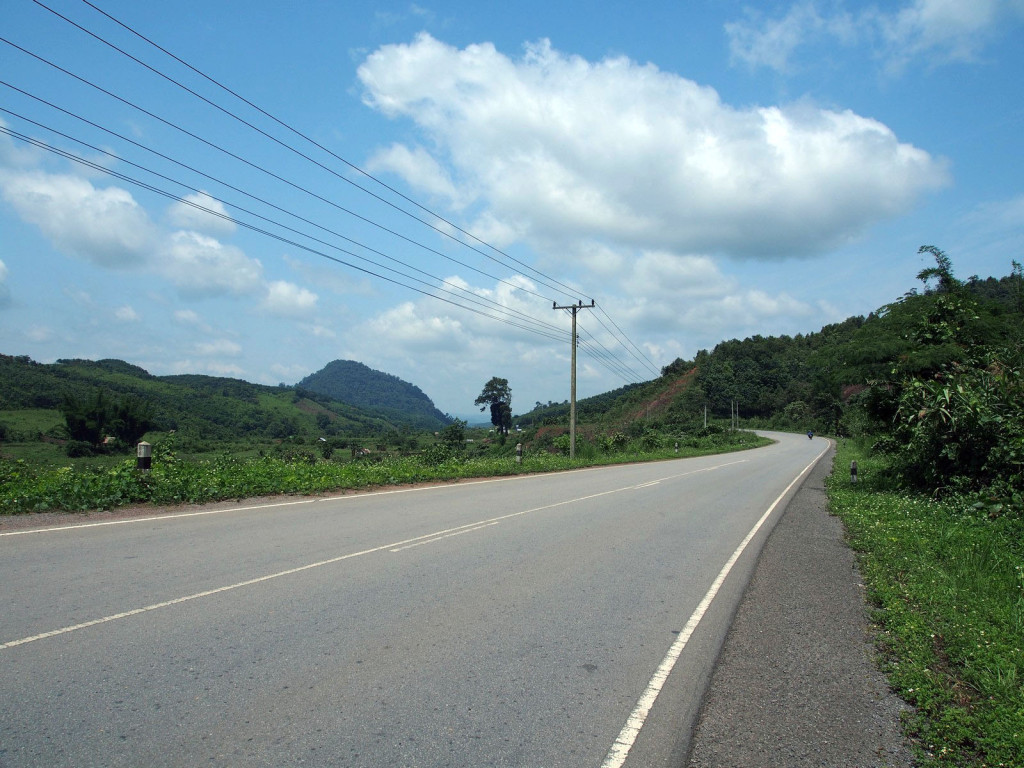

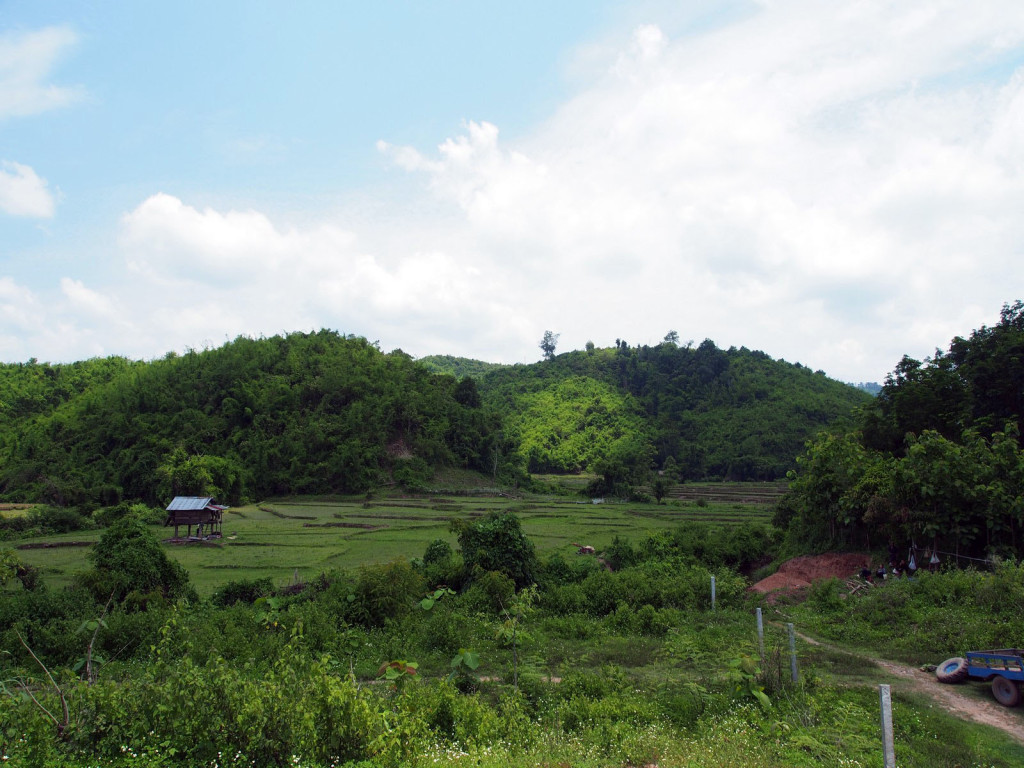
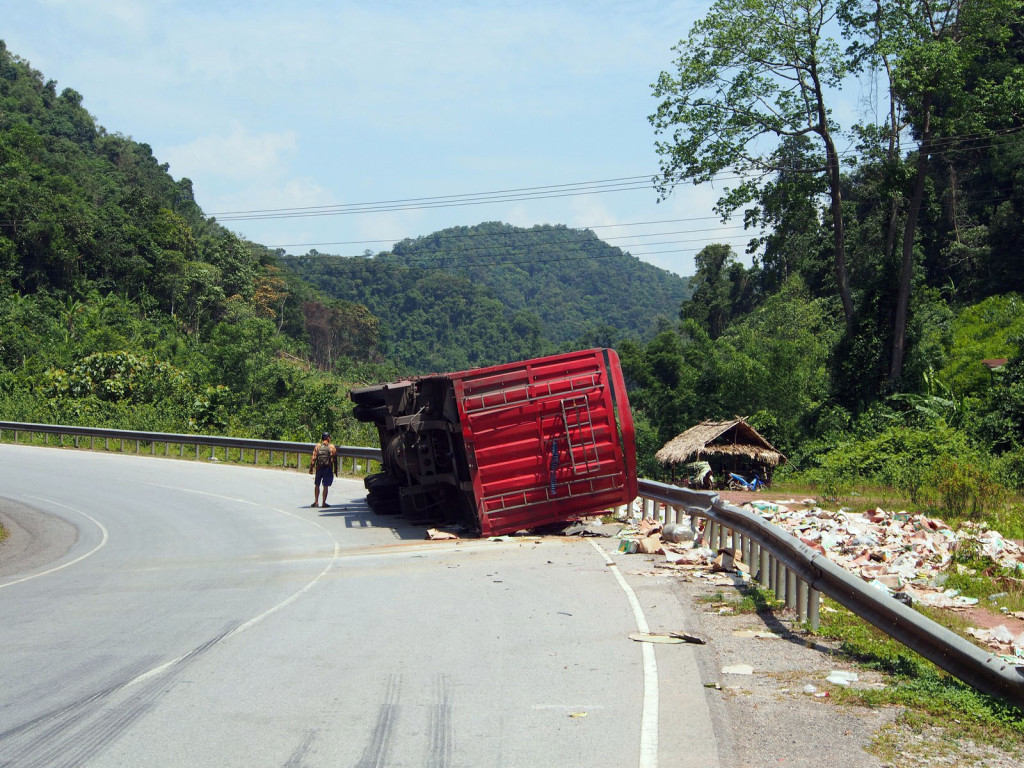

Really do like the work you guys are doing. You are showing us parts of the world that people rarely see….great effort and I’m enjoying the journey. 🙂